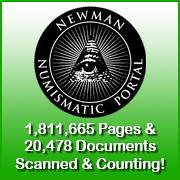
About UsThe Numismatic Bibliomania Society is a non-profit organization devoted to the study and enjoyment of numismatic literature. For more information please see our web site at coinbooks.org SubscriptionsThose wishing to become new E-Sylum subscribers (or wishing to Unsubscribe) can go to the following web page link MembershipThere is a membership application available on the web site Membership Application To join, print the application and return it with your check to the address printed on the application. Print/Digital membership is $40 to addresses in the U.S., and $60 elsewhere. A digital-only membership is available for $25. For those without web access, write to: Terry White, Treasurer AsylumFor Asylum mailing address changes and other membership questions, contact Terry at this email address: terrywhite5475@yahoo.com SubmissionsTo submit items for publication in The E-Sylum, write to the Editor at this address: whomren@gmail.com BUY THE BOOK BEFORE THE COINSale Calendar
|
- WAYNE'S WORDS: THE E-SYLUM JUNE 3, 2018
- ASYLUM SUMMER 2018 ISSUE PUBLISHED
- NBS PRESIDENT'S SUMMER 2018 MESSAGE
- 2018 NBS BENEFIT AUCTION DONATIONS SOUGHT
- HARTMANN OFFERS INTERNATIONAL ENGRAVER'S LINE
- SELECTIONS FROM THE JUNE 2018 WORKMAN'S SALE
- COURTEAU CANADIAN TOKEN PAMPHLETS OFFERED
- KOLBE & FANNING OFFER ADAMS RAYMOND CATALOGUES
- NEW BOOK: NAVAL AND MARITIME ENGRAVED COINS
- JOURNAL OF EARLY AMERICAN NUMISMATICS LAUNCHED
- NEWMAN PORTAL: SELLING COINS BY LOTTERY
- NEWMAN PORTAL SEARCH: 1719 SEDE VACANTE
- STUMP-TAIL CURRENCY AND THE INTERNET ARCHIVE
- NGC INTRODUCES NEW COIN IMAGING SERVICE
- NUMISMATIC LASER GRAPHICS COIN HOLOGRAMS
- SUMMER 2018 COIN BOARD NEWS PUBLISHED
- STUDY EXAMINES PRINT VS ELECTRONIC BOOKS
- NOTES FROM E-SYLUM READERS: JUNE 3, 2018
- SUPERSTITIONS ABOUT MONEY
- RECOVERY TOKENS FOR RESTRICTED GROUPS
- VOCABULARY TERMS: DIESHELL, EPOXY
- HERMAN "HENRY" C. KAMMEYER (1879-1949)
- HARVEY STACK'S NUMISMATIC FAMILY, PART 19
- HAPPY BIRTHDAY: MAURICE STORCK
- GEER STEYN RECEIVES 2018 J. SANFORD SALTUS AWARD
- SACAGAWEA DOLLAR MODEL RANDY’L TETON INTERVIEW
- ASSISTANCE SOUGHT IN IDENTIFYING TOKEN ISSUERS
- AI, NEWTON AND THE TRIAL OF THE PYX
- EPNNES DONATION SUPPORTS ANA SUMMER SEMINAR
- NUMISMATIC WALKING TOUR OF LOWER MANHATTAN
- GAMBLING ON BASEBALL MEDALS
- SELECTIONS FROM THE BEASLEY AND FAIRMONT SALE
- SOME INTERESTING MEDALS: JUNE 3, 2018
- NUMISMATIC NUGGETS: JUNE 3, 2018
- RARE YEHUD COINS FOUND AT TEMPLE MOUNT
- COIN DATES FOURTH CENTURY B.C. ROMAN TOMB
- COINAGE OF THE ROMAN USURPERS
- SPANISH GALLEON SAN JOSE FOUND
- EXHIBIT: SAWYER’S NATIVE AMERICAN GALVANOS
- MCAFEE LAUNCHES PHYSICAL CRYPTOCURRENCY
- HONG KONG MOVIE MONEY MASTER CONVICTED
- CHINESE MAN GIVES GIRLFRIEND BANKNOTE BOUQUET
- FEATURED WEB SITE: MEDAL COLLECTORS OF AMERICA
Click here to access the complete archive a
Click here to unsubscribe (scroll down)
To comment or submit articles, reply to whomren@gmail.com
Content presented in The E-Sylum is not necessarily researched or independently fact-checked, and views expressed do not necessarily represent those of the Numismatic Bibliomania Society.
WAYNE'S WORDS: THE E-SYLUM JUNE 3, 2018
 New subscribers this week include: Past President of the El Salvador Numismatic Association (ANUSAL), José Solórzano, courtesy of Roberto Jovel; Gino Geraci, courtesy of Bill Rosenblum, and Jim Noble, courtesy of
Colin Pitchfork. Welcome aboard! We now have 5,777 subscribers.
New subscribers this week include: Past President of the El Salvador Numismatic Association (ANUSAL), José Solórzano, courtesy of Roberto Jovel; Gino Geraci, courtesy of Bill Rosenblum, and Jim Noble, courtesy of
Colin Pitchfork. Welcome aboard! We now have 5,777 subscribers.
Thank you for reading The E-Sylum. If you enjoy it, please send me the email addresses of friends you think may enjoy it as well and I'll send them a subscription (but let me know if they are located in the European Union). Contact me at whomren@gmail.com anytime regarding your subscription, or questions, comments or suggestions about our content.
As a reminder, if you are having trouble receiving your issues, here's an article with some things to try:
ON GETTING YOUR E-SYLUM BY EMAIL (http://www.coinbooks.org/v21/esylum_v21n13a18.html)
After confirming with us that your address is still on our list, the next steps are to check your spam folder and put our address on your not-spam list. You might have to call your Internet Service Provider (ISP) next to sort it out. We can check the logs on our end, but what we always find is that the issue is getting delivered to your ISP but your ISP isn't sending it to your inbox.
This week we open with updates from the Numismatic Bibliomania Society, a fixed price offering, three numismatic literature sales, one new book and a new periodical as well.
Other topics this week include the Internet Archive, NGC's coin imaging service, coin holograms, superstitions about money, recovery tokens, Sacagawea dollar model Randy'L Teton, the Trial of the Pyx, highlights from multiple numismatic sales, and coins of the Roman usurpers.
To learn more about Eugene G. Courteau's token monographs, Wayte Raymond catalogues, naval and maritime engraved coins, The Journal of Early American Numismatics (JEAN) , the “fond old dreamer” Daniel E. Groux, Stump-Tail currency, coin-operated piano tokens, the Black Penny, the 1949 Assay Medal, and birthday boys Harvey and Maurice, read on. Have a great week, everyone!
Wayne Homren
Editor, The E-Sylum
ASYLUM SUMMER 2018 ISSUE PUBLISHED
 The Asylum
The Asylum
Summer 2018 Issue Vol. 36 No. 2
Table of Contents:
NBS News
NBS Constitution and By-Laws Proposed Changes and Ballot
The Asylum Awards Ballot
Vote using enclosed ballots or vote online at surveymonkey.com/r/SL56TDR
Message from the President
Donate to NBS Benefit Auction at ANA
A Handwritten Letter from Eric P. Newman Shared by George F. Kolbe
Funny Meeting You Here!
By Bill Daehn
Taking the Plunge: or, Becoming a “Real” Bookseller
By David F. Fanning
The Camden Bank Note Registers
By David Gladfelter
An Adventure in Rhode Island
By Dan Hamelberg
Chasing an Oasis of Numismatic Knowledge
By Thomas D. Harrison
Imhoof-Blumer, Fontana, and Quadras y Ramón Kibitzing My Collection
By Andrew McCabe
A Copy of Henfrey’s English Coins Bound with Wilkinson’s Ancient Egyptians
By David Pickup
There Has To Be a Better Lazy Deuce?
By John and Nancy Wilson
A Fortunate Scratch
By Ray Williams
An exceedingly interesting copy of Brooke’s English Coins
By Peter Gaspar
Tales of Numismatic Good Luck and Bad Luck
By Jud Petrie
To join NBS or renew your annual membership, see:
http://www.coinbooks.org/about/membership.html

NBS PRESIDENT'S SUMMER 2018 MESSAGE
Message from the President
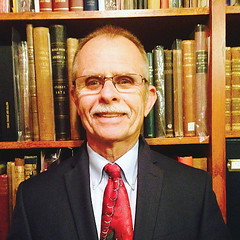 With the ANA World’s Fair of Money in Philadelphia quickly approaching, I would like to share a few highlights of our annual Numismatic Bibliomania Society events. We are delighted to have numismatic scholar,
researcher and author Roger Burdette, speaking at our Symposium on Thursday, August 16 at 1:00 in room 120 C on numismatic research at the National Archives. This will be a fascinating look at the challenges and discoveries
through Roger’s extensive experiences.
With the ANA World’s Fair of Money in Philadelphia quickly approaching, I would like to share a few highlights of our annual Numismatic Bibliomania Society events. We are delighted to have numismatic scholar,
researcher and author Roger Burdette, speaking at our Symposium on Thursday, August 16 at 1:00 in room 120 C on numismatic research at the National Archives. This will be a fascinating look at the challenges and discoveries
through Roger’s extensive experiences.
Our General Meeting held Friday, August 17 at 11:30 in room 117 will include the announcement of The Asylum author award winners. We are also looking forward to a timely presentation by numismatic literature dealer, David Fanning, discussing the current state of the numismatic literature market. As numismatic literature is going through a digital transition, this topic should be of considerable interest to all bibliophiles. Our all-important benefit auction will conclude the General Meeting. I would like to give a special shout-out to our generous members who are donating items for the auction and to all of our enthusiastic bidders who will ensure its success.
This year we have renewed our tradition of hosting an NBS club table. The table will be located near literature dealers Charles Davis and Kolbe & Fanning. We will be displaying a variety of choice items from Friday’s benefit auction. We hope everyone will have an opportunity to stop by the table to visit and receive a complimentary NBS bookmark. This will be a great chance to connect with fellow literature enthusiasts and share your thoughts and ideas for the betterment of the NBS.
Until we meet in Philadelphia, may your numismatic library provide investigation, discovery and most of all, enjoyment.
For more information on the Numismatic Bibliomania Society, see:
http://www.coinbooks.org/
2018 NBS BENEFIT AUCTION DONATIONS SOUGHT
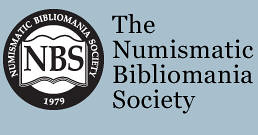 The 2018 General Meeting of the Numismatic Bibliomania Society (NBS) will be held on Friday, August 17 from 11:30 a.m. to 1:00 p.m. at the American Numismatic Association’s World’s Fair of Money in Philadelphia,
Pennsylvania. The meeting will conclude as usual with a benefit auction of numismatic books and related items donated to be sold for the benefit of the organization.
The 2018 General Meeting of the Numismatic Bibliomania Society (NBS) will be held on Friday, August 17 from 11:30 a.m. to 1:00 p.m. at the American Numismatic Association’s World’s Fair of Money in Philadelphia,
Pennsylvania. The meeting will conclude as usual with a benefit auction of numismatic books and related items donated to be sold for the benefit of the organization.
Donations have already been received from several NBS supporters, but more are needed to make the auction a success. NBS Board member David Fanning has volunteered to catalogue and conduct this year’s sale. Donated items may be sent to him at:
Kolbe & Fanning Numismatic Booksellers
141 W Johnstown Road
Gahanna OH 43230
He can be reached at df@numislit.com if you have any questions. All proceeds from the auction go to the Numismatic Bibliomania Society, with any expenses incurred in conducting the sale being donated to the NBS. Thank you for your consideration. Donations must be received by July 15.
The 2001 leaf book of Fulvio’s 1517 Illustrium Imagines, the first substantially illustrated numismatic book, printed by Bird & Bull Press with an essay by Roberto Weiss (donated by George F. Kolbe).
To read the earlier E-Sylum article, see:
NBS BENEFIT AUCTION AT 2018 ANA CONVENTION (http://www.coinbooks.org/v21/esylum_v21n09a04.html)

HARTMANN OFFERS INTERNATIONAL ENGRAVER'S LINE
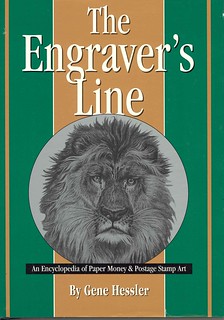
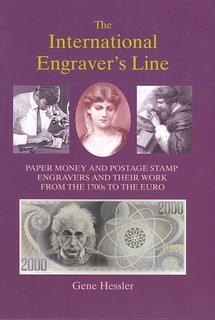
International Engraver's Line by Gene Hessler. We recently purchased the remaining 11 copies of this useful book having short paragraphs on each engraver, 2005, 381+10 pages, cloth, 4 page addenda, $95.00
Hartmann adds:
Though not listed I also have one copy available of the US-oriented Engraver's Line that I will only sell as a set with the International Engraver's Line for $220.00.
To visit the Philatelic Bibliopole web site, see: http://pbbooks.net/
SELECTIONS FROM THE JUNE 2018 WORKMAN'S SALE


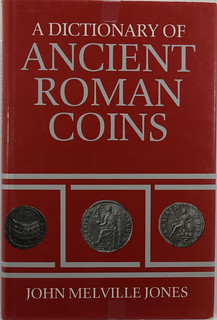
Lots 107 and 108
Lot 107
Hill, Philip V. THE MONUMENTS OF ANCIENT ROME AS COIN TYPES. Seaby. 1989. 4to, 145 pages; Hardcover w/ DJ; . Subject: Coinage - Ancient Rome
To view the complete lot description, see: 107 Hill: The Monuments of Ancient Rome as Coin Types (http://www.icollector.com/Hill-The-Monuments-of-Ancient-Rome-as-Coin-Types_i30112079)
Lot 108
Jones, John Melvile. A DICTIONARY OF ANCIENT ROMAN COINS. Seaby. 1990. 8vo, 329 pages; Hardcover w/ DJ; . Subject: Coinage - Ancient Rome
To view the complete lot description, see: 108 Jones: A Dictionary of Ancient Roman Coins (http://www.icollector.com/Jones-A-Dictionary-of-Ancient-Roman-Coins_i30112080)

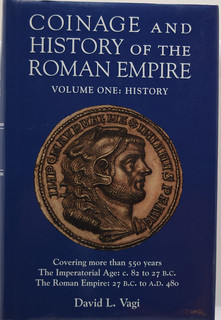
Lots 113 and 119
Lot 113
Rostovtzeff, M.I. & A.R. Bellinger & F.E. Brown & N.P. Toll & C.B. Welles (eds.). THE EXCAVATIONS AT DURA-EUROPOS FINAL REPORT VI: THE COINS. Yale University Press. 1949. 4to, 210 pages; Hardcover; . Subject:
Coinage - Ancient Rome
To view the complete lot description, see: 113 Rostovtzeff: The Excavations at Dura-Europos Final Report VI: The Coins (http://www.icollector.com/Rostovtzeff-The-Excavations-at-Dura-Europos-Final-Report-VI-The-Coins_i30112085)
Lot 119
Vagi, David L. (Signed) COINAGE AND HISTORY OF THE ROMAN EMPIRE - VOL 1 & 2. Coin World - Sidney. 1999. 8vo, 1296 pages; Hardcover w/ DJ; Ex Libris. Subject: Coinage - Ancient Rome
To view the complete lot description, see: 119 Vagi: (Signed) Coinage and History of the Roman Empire - Vol 1 & 2 (http://www.icollector.com/Vagi-Signed-Coinage-and-History-of-the-Roman-Empire-Vol-1-2_i30112091)
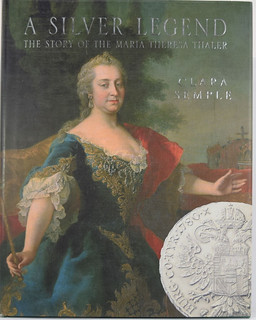
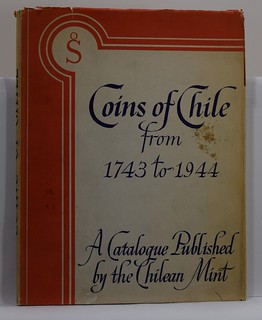
Lots 145 and 157
Lot 145
Semple, Clara. A SILVER LEGEND: THE STORY OF THE MARIA THERESA THALER. Barzan Publishing Limited. 2005. 4to, 165 pages; Hardcover w/ DJ; . Subject: Coinage - Austria
To view the complete lot description, see: 145 Semple: A Silver Legend: The Story of the Maria Theresa Thaler (http://www.icollector.com/Semple-A-Silver-Legend-The-Story-of-the-Maria-Theresa-Thaler_i30112117)
Lot 157
Superintendencia De La Casa De Moneda. COINS OF CHILE FROM 1743 TO 1944 - A CATALOG PUBLISHED BY THE CHILEAN MINT. Casa De Moneda - Santiago. 1944. 4to, 70 pages; Hardcover w/ DJ; . Subject: Coinage - Chile
To view the complete lot description, see: Superintendencia De La Casa De Moneda: Coins of Chile from 1743 to 1944 - A Catalog Published by the (http://www.icollector.com/Superintendencia-De-La-Casa-De-Moneda-Coins-of-Chile-from-1743-to-1944-A-Catalog-Published-by-the_i30112129)
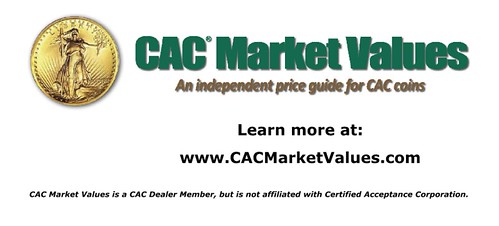
COURTEAU CANADIAN TOKEN PAMPHLETS OFFERED
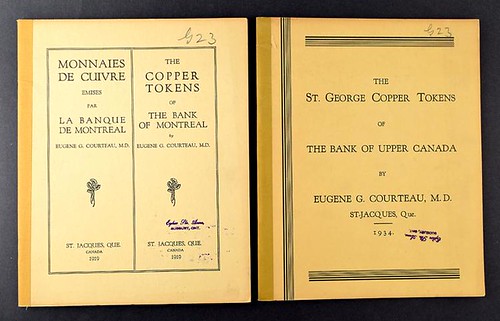
Description: Included are the following individually Bound Booklets: The Coins and Token of Nova Scotia (1910). The Habitant Tokens of Lower Canada (1927). The St. George Copper Tokens of the Bank of Upper Canada (1934). The Copper Tokens of the Bank of Montreal (1919) (bilingual) and The The Canadian Bouquet-Sous (1908) - 2 copies. Also included: A six pages carbon copy typesript of "The Blacksmith Tokens". A coverless pamphlet entitled "Canada - The Famous Dr. Courteau Collection of Canadian rarities" subtitled "this is the most important Canadian collection recently offered". A fixed price sale list, with a two page hand written list of corrections, by an unknown hand. A manuscript copy of "the Canadian 1832 Bust and Harp Tokens" dated 1934, and apparently a revision of a work originally published in 1907. A photocopy of a work in progress "Lesslie & Sons Tokens", held together with a business card of Major Sheldon Carroll, Curator, Numismatic Collection, Bank of Canada. A manuscript copy of "The Blacksmith Tokens". A treasure trove of Canadian Numismatics. Weight total : 935 gr. Estimate price $500+ cdn
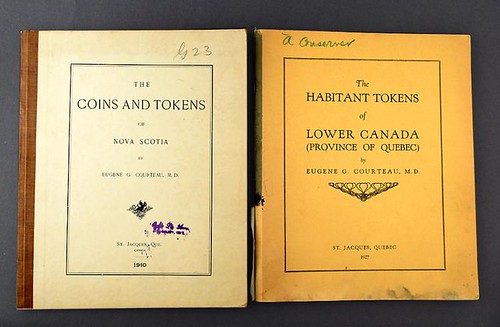
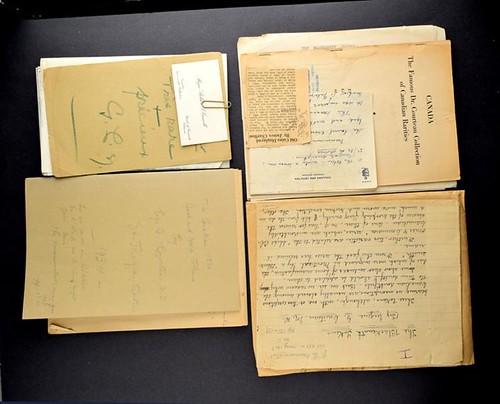
To read the complete lot description, see:
Lot 262: Multiple Rare and Original Works By Eugene G. Courteau (https://www.invaluable.com/auction-lot/-1-c-1E04F08936)
KOLBE & FANNING OFFER ADAMS RAYMOND CATALOGUES
FROM THE JOHN W. ADAMS LIBRARY
TO BE OFFERED BY KOLBE & FANNING
July 14, 2018 Sale Includes Complete Set of United States Coin Company Catalogues
Kolbe & Fanning Numismatic Booksellers are celebrating our 150th Auction by offering highlights of the John W. Adams numismatic library on July 14, 2018.
The Adams Library includes one of the finest collections of American numismatic auction catalogues ever assembled. Among the most impressive highlights are the catalogues of Wayte Raymond.
Wayte Raymond is best remembered today for his books and periodicals, most importantly the Standard Catalogue of United States Coins, published in 18 editions from 1934 to 1957, and the Coin Collector’s Journal, published from 1934 to 1958. While some of his innovations continue to influence the hobby today, his auction catalogues have at times been underappreciated. The Adams Library includes nearly every catalogue published by this indefatigable numismatist, including a complete set of the catalogues issued under the United States Coin Company banner. This is the first time such a set has been offered--even the set in Raymond’s own library was incomplete.
A few particularly noteworthy Raymond catalogues include:
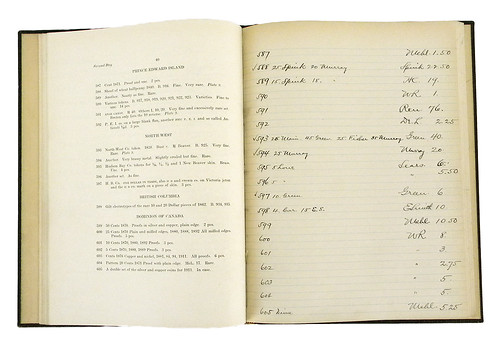
Lot 289
Lot 289: the bid book of Part I of the W.W.C. Wilson sale (1925), arguably the most important collection of Canadian numismatic material ever offered at auction.
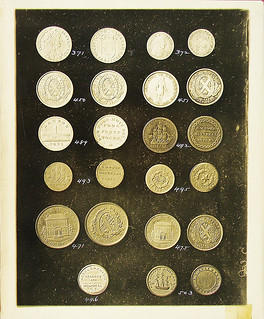
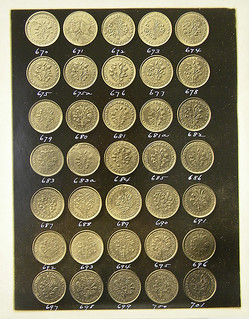
Lots 290 and 291
Lots 290 and 291: rare variant editions of the second day’s sale of the W.W.C. Wilson collection, each with 11 outstanding photographic plates depicting Canadian coins and medals, including four plates illustrating Wilson’s extraordinary set of bouquet sous.
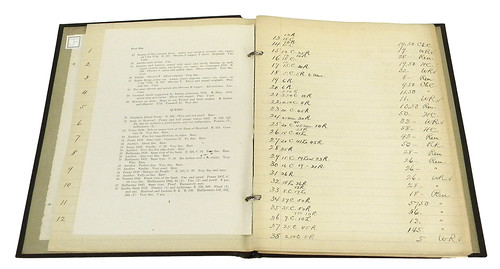
Lot 293
Lot 293: the bid books of Parts II and III of the W.W.C. Wilson sale (1926 and 1927).
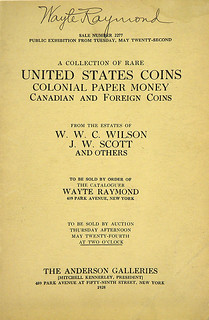
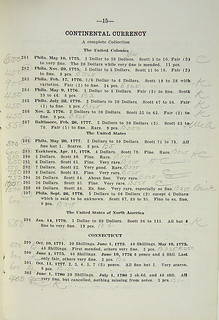
Lot 295
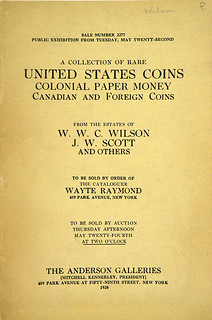

Lots 294 and 317
Lots 294 and 295: the account copy and the bid book of the extremely rare Part IV of the W.W.C. Wilson sale (1928).
Lot 317: the rare 1914 Foster Lardner catalogue with photographic plates, with the Washingtonia section heavily annotated.


Lots 321 and 330
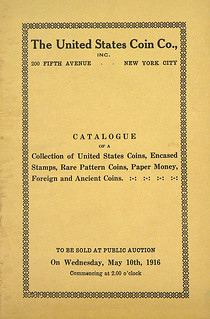
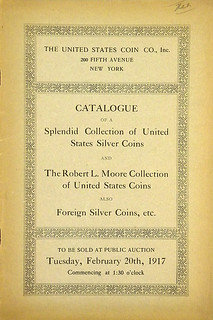
Lots 331 and 335
Lots 321, 330, 331, and 335: exceptionally rare catalogues of March 5, 1915; April 5, 1916; May 10, 1916; and February 20, 1917--each of them the first stand-alone copy we have offered at auction in at least thirty years.
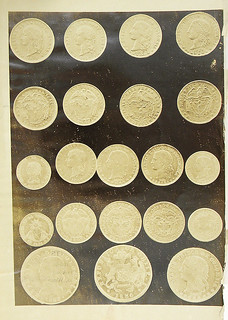

Lots 340 and 344
Lot 340: the extremely rare 1917 Dr. George P. French catalogue, with a photographic plate depicting Colombian gold coins.
Lot 344: a complete set of J.C. Morgenthau sales, published by Raymond with J.G. Macallister between 1932 and 1945.
An extensive, full-color catalogue will be issued, and the sale will feature live online bidding using Kolbe & Fanning’s custom third-party online bidding platform. The online catalogue will be available shortly at bid.numislit.com; the printed catalogue will mail in a couple of weeks. Bidders wishing to make an appointment to view auction lots are invited to contact David Fanning at df@numislit.com. We are excited to be offering the Adams Library of classic American numismatic auction catalogues and look forward to sharing more previews in the near future.
Kolbe & Fanning Numismatic Booksellers LLC is a licensed and bonded auction firm in the State of Ohio. For more information, please see the Kolbe & Fanning website at numislit.com or email David Fanning at df@numislit.com.
To read the earlier E-Sylum articles, see:
KOLBE & FANNING ANNOUNCES JULY 14, 2018 SALE (http://www.coinbooks.org/v21/esylum_v21n20a04.html)
KOLBE & FANNING OFFER ADAMS CHAPMAN CATALOGUES (http://www.coinbooks.org/v21/esylum_v21n21a04.html)
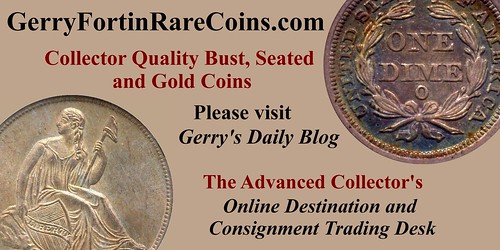
NEW BOOK: NAVAL AND MARITIME ENGRAVED COINS
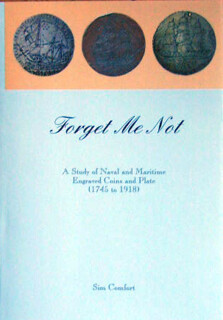 The art of the sailor closely reflected his world. He used devices such as fish, the sun, anchors and mermaids to scrimshaw whale teeth and decorate tobacco boxes and sea chests. But the most potent of all his
images was that of the ships he sailed in, and possibly the most personal of all the things the mariner created was his gift to the loved one that he left behind. The engraved coin is small in size but ideally suited as a
medium to detail his ship and declare his affection.
The art of the sailor closely reflected his world. He used devices such as fish, the sun, anchors and mermaids to scrimshaw whale teeth and decorate tobacco boxes and sea chests. But the most potent of all his
images was that of the ships he sailed in, and possibly the most personal of all the things the mariner created was his gift to the loved one that he left behind. The engraved coin is small in size but ideally suited as a
medium to detail his ship and declare his affection.
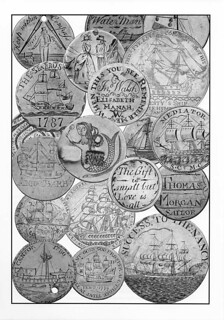 Contained in this octavo volume is the first full study of maritime engraved coins and all the various types of ships found in this rare art form. The time span is from the mid 18th to the beginning of the 20th
century. Included are 140 pieces that depict the great men-of-war during the age of fighting sail, Indiamen, privateers, convict ships, slavers and numerous merchantmen. The research available has uncovered the life of the
ship and, if the ship was in the Royal Navy, the live of the sailor who actually made the forget-me-not.
Contained in this octavo volume is the first full study of maritime engraved coins and all the various types of ships found in this rare art form. The time span is from the mid 18th to the beginning of the 20th
century. Included are 140 pieces that depict the great men-of-war during the age of fighting sail, Indiamen, privateers, convict ships, slavers and numerous merchantmen. The research available has uncovered the life of the
ship and, if the ship was in the Royal Navy, the live of the sailor who actually made the forget-me-not.
Where rich sea stories are found to bring the reader on board during the action, they are liberally used!
Forget Me Not contains nearly 300 pages of text and halftone images, 16 pages of colour plates, estimated market values, and a comprehensive index. The book is produced on fine longlife 115 gsm paper for the text, 135 gsm for the colour plates, is hardbound by hand and limited to 500 copies only.
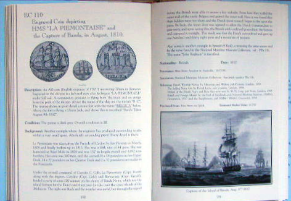
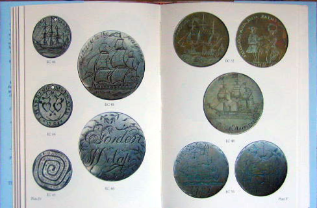
ISBN 978 0 905 887 08 1 Hardbound Edition.
Forget Me Not is limited to 500 copies only and bears a signed numbered certificate for each copy. We now have less than 100 copies left.
Price: £75.00 plus packing and shipping. Weight is 1 KG / 2 Lbs.
For more information, or to purchase, see:
Forget Me Not (http://www.simcomfort.co.uk/forgetmenot.htm)
JOURNAL OF EARLY AMERICAN NUMISMATICS LAUNCHED
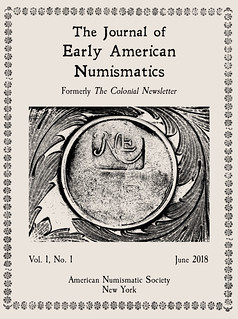 The inaugural issue of the Journal of Early American Numismatics (JEAN) will ship to subscribers in early July. It will replace The Colonial Newsletter. Edited by Christopher McDowell, the 240-page
journal includes five articles: “Fiscal Paper and the Financing of the Revolutionary War: The Link between Speculation in Public Securities and Connecticut Coppers” (Christopher McDowell), “(Re-)Discovery: Yale’s Second and
Third Noe II-A New England Shillings” (B. D. R. Hellings), “The Evolution of Spanish Colonial Coinage and its Influence on the United States” (Brian Stickney), “Higley Tokens: The Value of Three Pence” (Joseph Daragan), “The
Mysterious Auctori Plebis Tokens” (Jeff Rock).
The inaugural issue of the Journal of Early American Numismatics (JEAN) will ship to subscribers in early July. It will replace The Colonial Newsletter. Edited by Christopher McDowell, the 240-page
journal includes five articles: “Fiscal Paper and the Financing of the Revolutionary War: The Link between Speculation in Public Securities and Connecticut Coppers” (Christopher McDowell), “(Re-)Discovery: Yale’s Second and
Third Noe II-A New England Shillings” (B. D. R. Hellings), “The Evolution of Spanish Colonial Coinage and its Influence on the United States” (Brian Stickney), “Higley Tokens: The Value of Three Pence” (Joseph Daragan), “The
Mysterious Auctori Plebis Tokens” (Jeff Rock).
New subscribers are always welcome, and the ANS encourages readers of the new journal to recommend it to their libraries. To subscribe (or to renew a subscription), contact Emma Pratte, ANS Membership Assistant, at 212.571.4470 x117, or membership@numismatics.org. Subscriptions are US $60.00 (two issues/year).
The Journal of Early American Numismatics (JEAN) is a new research journal based on the former Colonial Newsletter (CNL) dedicated to the study of early American numismatics. Founded in 1960, CNL continuously published some of the most scholarly and seminal studies in this area of numismatics. Focusing on the study of the coinages produced by the states during the Confederation period of the United States, CNL also investigated a variety of other specie that the U.S.’s forefathers used in their daily lives.
JEAN expands the focus of CNL with contributions on numismatics of all of the Americas during the same time period covered by CNL, and is published as a bound scholarly journal twice a year in June and December.
For more information, or to subscribe, see:
http://numismatics.org/store/cnl/
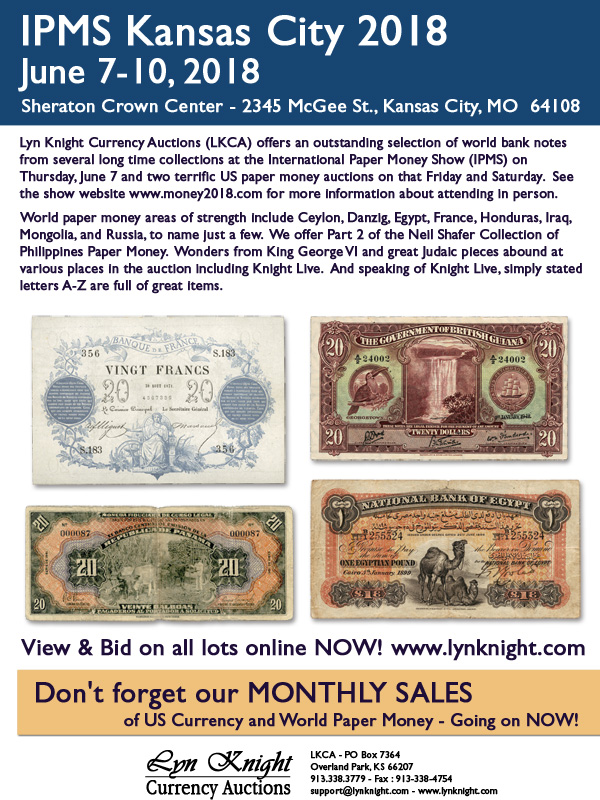
NEWMAN PORTAL: SELLING COINS BY LOTTERY
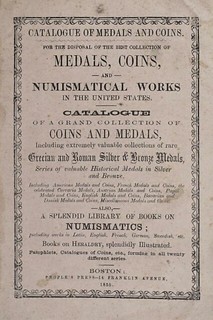 A recent addition to the Newman Numismatic Portal is Daniel E. Groux’s Grand Enterprise for the Disposal of the Best Collection of Medals and Coins in the United States (1855). Groux divided his collection
into twenty “prizes” and offered raffle tickets at ten dollars each. Four hundred and fifty such tickets were to be sold, which valuation ($4500) was, according to Groux, much less than the total value of the collection.
A recent addition to the Newman Numismatic Portal is Daniel E. Groux’s Grand Enterprise for the Disposal of the Best Collection of Medals and Coins in the United States (1855). Groux divided his collection
into twenty “prizes” and offered raffle tickets at ten dollars each. Four hundred and fifty such tickets were to be sold, which valuation ($4500) was, according to Groux, much less than the total value of the collection.
Groux’s financial problems are well documented (see Joel Orosz’s article on Groux in the October-December 2012 Asylum) and it is unknown if the sale ever took place. The collection itself was typical for an American numismatic cabinet of the era, with a heavy dose of European and non-federal content. Today Groux is known as the “fond old dreamer” as William Strobridge described him in an 1874 auction catalog – an individual more adept at planning than delivering.
Link to Groux’s Grand Enterprise... (1855) on Newman Portal:
https://nnp.wustl.edu/library/book/546724
I'm always scouting for new content for the NNP, and have been particularly focused on periodicals. Can anyone help with this one?
The Commemorative Trail
This great 1980s-era publication on U.S. commemorative coins had lots of nicely illustrated articles. Anthony Swiatek was one of the principals behind it, but he reports that his only set was lost in shipping years ago. I no longer have my issues, and don't believe the ANS or ANA libraries have sets either. If you've got a run of The Commemorative Trail, please let us know. Thanks. -Editor
Link to The Asylum (October-December 2012) on Newman Portal:
https://nnp.wustl.edu/library/book/510167?page=15
Link to Strobridge catalog of the Groux collection, April 1874:
https://nnp.wustl.edu/library/auctionlots?AucCoId=511772&AuctionId=512117&page=12
NEWMAN PORTAL SEARCH: 1719 SEDE VACANTE

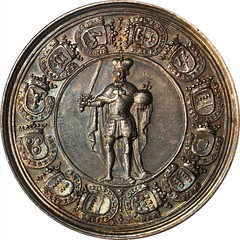
This week a Newman Portal user searched on the term “1719 Sede Vacante.” I have no idea what this is, but let’s find out. NNP identifies only 9 auction appearances, so it must be a fairly obscure item. The most recent appearance is from Stack’s Bowers January 2015 NY International sale, lot 3700, which identifies it as a German medal and catalogs it as follows: “Paderborn. Silver Medal, 1719. Sede Vacante. 44.67 mm; 29.2 gms. Zepernick-241. Charlemagne in a circle of shields; Reverse: Saint Liborius in a circle of shields.” Wikipedia tells us that St. Liborius is the patron saint of Paderborn – but the story goes deeper:
“Miracles are said to have occurred at his [Laborius’s] tomb. In 835 Bishop Aldrich [of Le Mans, St. Liborius’s home in what is modern day France] placed some relics of his body into an altar in the cathedral, and in the following year, on the instructions of Emperor Louis the Pious, sent the body to Bishop Badurad of Paderborn, a diocese founded in 799 by Pope Leo III and Emperor Charlemagne that had no saint of its own.
From this arose a ‘love bond of lasting brotherhood’ that has survived all the hostilities of the succeeding centuries and is considered to be the oldest contract still in force...In view of the power that veneration of Saint Liborius has had in binding peoples together, Archbishop Johannes Joachim Degenhardt of Paderborn established in 1977 the Saint Liborius Medal for Unity and Peace, which is conferred every five years on someone who has contributed to the unity of Europe on Christian principles.”
The 1719 Sede Vecante is thus a medal that appeals to Eurpoean unity within the context of Christianity and French-German relations.
Images: 1719 Sede Vacante medal from Stack’s Bowers January 2015 New York International sale, lot 3700 (realized $458.25).
Link to Stack’s Bowers January 2015 NY International sale catalog on NNP:
https://nnp.wustl.edu/library/auctionlots?AucCoId=3&AuctionId=517153&page=72
The Vatican will be issuing special-edition stamps and minting special coins marking the upcoming "sede vacante," the period when the see of Rome is vacant before the election of a new pope.
Link to the 3/3/2013 E-Sylum article on NNP:
https://nnp.wustl.edu/library/periodical/15587

STUMP-TAIL CURRENCY AND THE INTERNET ARCHIVE
John and Nancy Wilson write:
While researching a cardboard uniface ten cent note we have which is redeemable at Tousley's Saloon - with a horse depicted with the words on its side, STUMPTAIL CURRENCY, we found the below link which has many different early references that would be useful to the readers of The E-Sylum.
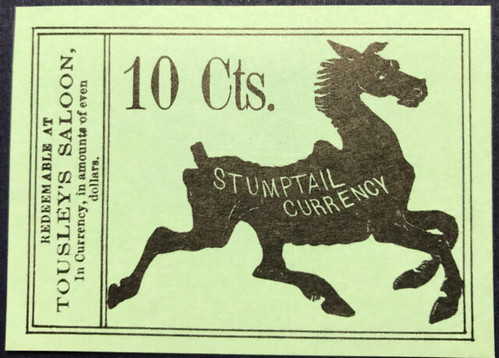
The Internet Archive is used by the Newman Numismatic Portal for storing its digitized numismatic books, periodicals, auction catalogs and archival material. While the portal is the right place to start for numismatic information, Internet Archive is well worth checking for terms which aren't purely numismatic.
A search for "STUMP-TAIL CURRENCY" in the Newman Numismatic Portal returns nine hits - one in Numismatic Scrapbook Magazine, four in Numismatic Notes and Monographs, and four in The Bankers Magazine -Editor
To see the Newman Numismatic Portal results:
https://nnp.wustl.edu/library/searchwithterms?searchterm=STUMP-TAIL%20CURRENCY%2C
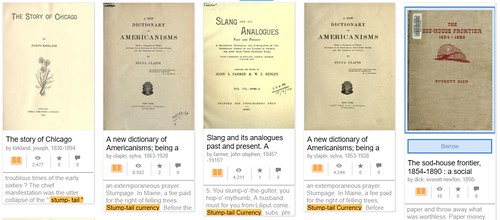
To see the Wilsons' search results:
https://archive.org/search.php?query=stump+tail+currency&sin=TXT&page=2
From Banker's Magazine (August 1862, p164)
Stumptail Currency.—In the Western States they have had wild-cat and red-dog currency. To these are now added what they denote as “stump-tail currency.’ This term is used to signify the notes of those banks whose circulation has been based on bonds of the Southern States. Soon after the breaking out of the present rebellion, these bonds proved utterly worthless, and the banks which held them of a consequence caved in. Their issue became stump-tailed, that is, reduced to nihil. —Historical Magazine.
Here's a definition of the term from A New Dictionary of Americanisms (p391):
Stump-tail Currency. Before the war of secession, a term applied, in the West, to bank-notes of doubtful value, or depreciated paper currency. Stunts.
From The Sod-House Frontier 1854-1890 (p92)
It was very much as a senator from an eastern state has said when his state was passing through this experience. He remarked that the members of the legislature had to sort their money each morning after reading the paper and throw away what was worthless. Paper money was called by various names such as "stump-tail currency," rag money, and shin plaster.
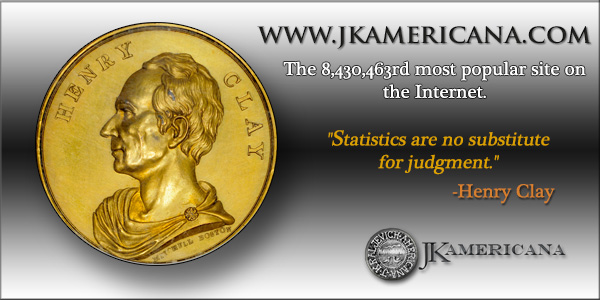
NGC INTRODUCES NEW COIN IMAGING SERVICE
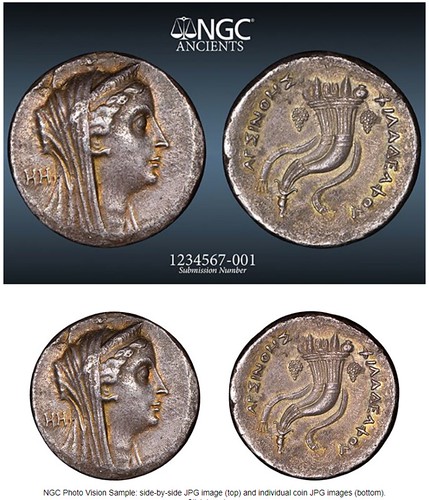
NGC introduced a new “raw” coin high-resolution imaging service on June 1, 2018. This service provides submitters with high-resolution images of their coins before they are encapsulated in NGC holders. These images are perfect for use in the NGC Registry, on the NGC Chat Boards or in online marketplace listings. The raw coin imaging service is called NGC Photo Vision®, and it replaces NGC’s current service of the same name.
Submitters who select NGC Photo Vision on the NGC Submission Form will receive high-resolution JPG images of the obverse and the reverse of the coin as well as a side-by-side high resolution JPG with the NGC logo and NGC submission number. The three images will be sent to the email address provided by the submitter.
NGC Photo Vision is $15 per coin. As a special introductory offer, the new NGC Photo Vision will be only $7.50 through September 30, 2018. Submitters can use NGC’s existing submission forms; this discount will be automatically applied.
“For years, NGC has taken extraordinary photos of coins prior to encapsulation for its marketing and internal image catalog,” said Rick Montgomery, NGC President. “By popular demand, we are now giving our customers the ability to request this superior service for their own coins.”
To read the complete article, see:
NGC Introduces New Raw Coin Imaging Service (https://www.ngccoin.com/news/article/6564/new-ngc-photo-vision/)
NUMISMATIC LASER GRAPHICS COIN HOLOGRAMS
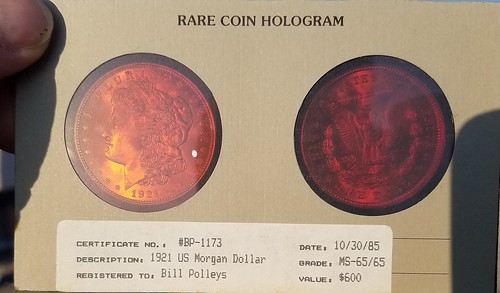
Has anyone ever seen these before ?? I guess there was a grading service that would grade & image the coins, and included a front and back hologram on the certificate. This is definitely one of the coolest vintage numismatic items i have ever seen. A buddy of mine paid $1 for 2 of these at the local flea market. Unfortunately the coins werent included with the cert. Ive never even heard of such a thing. So....... Slab collectors, is there any value here??
NLG (Numismatic Laser Graphics) Ownd by Pelco Coin Galleries this service is a variation of the photocertificate service. The coin is in an air-tite holder, card, and oversized vinyl flip stapled to the "certificate". The certificate is a greenish cardbaord holder that instead of photographs, has a white light hologram of each side of the coin contained therein. The label with the seial number, description, registration,date of certification, grade, and owners value is at the bottom. The back has the company name but it is usually covered by the label folded over from the front side.
The interesting thing about this company is the use of the holograms. the coins can be magnified and still retain their three dimentional appearance, and as they are tiped the images still display rotating cartwheel luster just as the coins do. Not flat an fixed like a regular photo does. tipping the hologram allows "light" to play across and highlight different areas just like when you examine a real coin. The one thing it can't do though is reproduce th true color. Being a white light hologram the image is seen in red and green.
To read the complete article, see:
1983 Hologram Photo Cert. W@W !! L@@K !! Mu$t $ee
(https://www.cointalk.com/threads/1983-hologram-photo-cert-w-w-l-k-mu-t-ee.317473/)
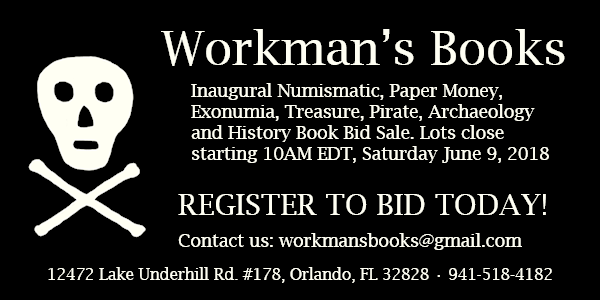
SUMMER 2018 COIN BOARD NEWS PUBLISHED

NEW DISCOVERY LEADS TO FURTHER RESEARCH ON MALLOY The discovery of a new variety for the Lincoln Printing Company coin board custom printed on behalf of funeral director Dave J. Malloy prompted board collector Chris Buck to do some more digging on this interesting character, and the fruit of his endeavor is seen in a series of images reproduced with this issue.
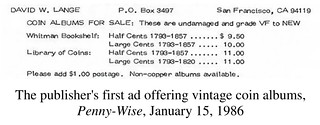 BLAST FROM THE PAST I've been dabbling with coin boards and albums for a very long time, and while poking around the wealth of periodicals on view at the Newman Numismatic Portal I came across an ad of
mine from 1986 offering duplicate Whitman Bookshelf and Library of Coins albums. This is reprinted for a bit of fun.
BLAST FROM THE PAST I've been dabbling with coin boards and albums for a very long time, and while poking around the wealth of periodicals on view at the Newman Numismatic Portal I came across an ad of
mine from 1986 offering duplicate Whitman Bookshelf and Library of Coins albums. This is reprinted for a bit of fun.
As long as we're reaching back to the past, one of my favorite websites to surf is the Wayback Machine (https://archive.org/web). This site evidently was named as a tribute to Mr. Peabody's invention in the animated cartoon, Peabody's Improbable History, itself a recurring segment in the show The Adventures of Rocky and Bullwinkle. This site captures countless websites over a period of many years, allowing users to see them as they were at any particular time. My own board website may be viewed in all its vintage glory at the following address: https://web.archive.org/web/*/http://coincollectingboards.com/ Just click on the highlighted dates back to 2007.
For more information, see Dave's web site at:
http://www.coincollectingboards.com/
STUDY EXAMINES PRINT VS ELECTRONIC BOOKS
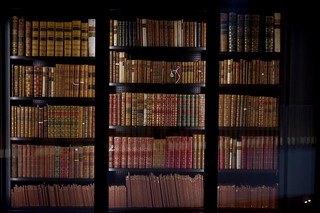 The study found that research participants "described being more emotionally attached to physical books, and said they use physical books to establish a sense of self and belonging," according to the
University of Arizona. Book lovers have long lamented the loss of "book smell" that accompanies the use of e-books, and participants also touched on other important aspects of book ownership: the use of bookshelves
to curate a persona and the ability to augment the pages of a book with marginal notes, in particular.
The study found that research participants "described being more emotionally attached to physical books, and said they use physical books to establish a sense of self and belonging," according to the
University of Arizona. Book lovers have long lamented the loss of "book smell" that accompanies the use of e-books, and participants also touched on other important aspects of book ownership: the use of bookshelves
to curate a persona and the ability to augment the pages of a book with marginal notes, in particular.
Participants also "expressed frustration" with the lack of options with regard to file moving and sharing. Aggressive DRM practices have severely restricted readers' ability to share e-books with friends. The industry has long felt word-of-mouth marketing is crucial to book success, and the restrictions that accompany e-books tamp down that behavior.
Ultimately, according to the study's lead author, Sabrina Helm, e-books and print books are entirely different products with different functions--the former being much more utilitarian and service-focused and the latter being more sensory-rich.
To read the complete article, see:
Owning Print Books Feels Different From Owning E-Books
(https://www.forbes.com/sites/ellenduffer/2018/05/28/owning-print-books-feels-different-from-owning-e-books/#55d0d0a7b6d1)

NOTES FROM E-SYLUM READERS: JUNE 3, 2018
The Sentimental Magazine Medals
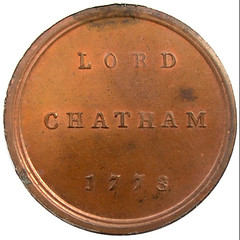 Joe Esposito writes:
Joe Esposito writes:
Thanks for including the information on the new book on the Sentimental Magazine medals. I collect them and was very excited to learn of this publication. I’ve ordered the book.
To read the earlier E-Sylum article, see:
BOOK REVIEW: THE SENTIMENTAL MAGAZINE MEDALS (http://www.coinbooks.org/v21/esylum_v21n21a09.html)
More Political Slogans on Banknotes
Scott Barman writes:
Living in the Washington, D.C. metropolitan area, I have seen so many different things written or stamped on Federal Reserve Notes that I am now thinking I should keep them and write a book or at least take pictures of them first. I have seen messages for nearly every political situation dating back over 20 years. Now that I am no longer working as a contractor to the federal government, I am not traveling into the District as much.
Lately, I have seen both pro- and anti-administration messages written or stamped on currency the further from D.C. I go. On a recent trip to Fredericksburg, VA I was given a Series 2009 $1 Geithner-Rios note in change with an anti-administration message written on the back.
Following the last Whitman Expo I stopped near the convention center for bottle of water and the $5 note I received in change had a message favorable to Gov. Larry Hogan. I thought this was strange since Baltimore is overwhelmingly Democratic and the governor is a Republican.
During the last election I found a few pro-Green Party stickered quarters.
And this doesn't count the "Where's George" stamped currency I have received over the years.
To read the complete article, see:
MORE ON POLITICAL SLOGANS ON BANKNOTES (http://www.coinbooks.org/v21/esylum_v21n21a16.html)
On Numismatic Specialization
Paul Schultz writes:
I just wanted to respond to Dave Bowers' assertion that “Specialization is the key to longevity” in coin collecting. It is obvious that officers in specialized publications will be specialists in those respective fields, but this does not mean that generalists stop collecting after a few years. They simply are not so dedicated to a single area of numismatics that they become an officer in a specialized club.
From my own experience, I collected circulating US issues in the 1960s, but I discovered that when I had completed something like Roosevelt dimes or Liberty Walking Halves, I had a collection in which every coin was identical except for date and mint mark. I had no inclination to start collecting by minute die varieties that require a magnifying glass to differentiate, so as I completed collections, I lost interest in each one. This brought me to type coins, in which there is more variety in designs.
Later I discovered that ancients are often less expensive than US, exceptionally widely varied, and even more historical, so I began with representative examples of various cultures and eras. After about 300 ancients I later went on to colonials, medieval coins, Renaissance coins, civil war and hard times tokens, and coins that my ancestors would have used, all by representative example rather than complete collections. This is about as un-specialized as you can get, but I have been at it for 55 years so far.
The advantages are that there is an incredibly interesting variety of designs, you learn a very wide spectrum of historical facts, there is no need for getting the rarest and most expensive coins, I can always find additional coins that could fit into the collection, and I can put together a display or talk on an enormous variety of topics by selecting the right coins from the collection.
There are a number of people out there who do not have the least interest in examining a single series for slight die variations, but could spend decades enjoying the breadth and differences in a non-specialized collection. I would specifically disagree with the conventional wisdom of recommending specialization in some one tiny area of coin collecting for everyone--some people will get bored with that but be thrilled with variety. It all depends on whether a given collector likes depth of detail or prefers the big picture.
To read the earlier E-Sylum article, see:
NOTES FROM E-SYLUM READERS: MAY 27, 2018 : How to Improve and Strengthen the ANA (http://www.coinbooks.org/v21/esylum_v21n21a17.html)
Illinois Bicentennial coin contest
Bruce Perdue writes:
Illinois celebrates it's Bicentennial this year. Here is a blurb from the Voting For Illinois Bicentennial Coin Contest.
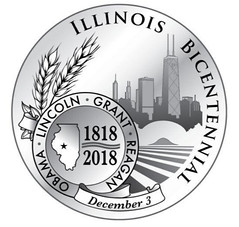 Images of Springfield, Chicago, Abraham Lincoln and Barack Obama are among the options residents can select from when voting for the design of the official Illinois Bicentennial coin.
Images of Springfield, Chicago, Abraham Lincoln and Barack Obama are among the options residents can select from when voting for the design of the official Illinois Bicentennial coin.
State Treasurer Michael Frerichs on Friday announced that online voting is open for the five design options, created by Illinois artists. The winning design will be minted on one side of the coin and distributed to commemorate the state’s 200th birthday. The back of the coin will feature the state seal.
Voting at http://www.illinoiscoincontest.com/ runs through June 15. The winner will be announced June 18.
Coins can be pre-ordered for $45 each.
To read the complete article, see:
Voting open for Illinois Bicentennial coin contest
(http://www.sj-r.com/news/20180601/voting-open-for-illinois-bicentennial-coin-contest)
Schulman Family History Book

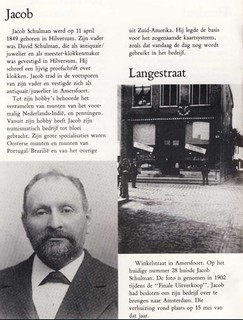
Martin Purdy writes:
Rather too late, I found this PDF of the 100th anniversary booklet about the Schulman firm, about two minutes before last week's E-Sylum arrived. It's in Dutch but clearly identifies "Jacob" as the founder and "Jacques" as a subsequent family member, even though Jacob might also very well have been known as Jacques for the reasons we've dealt with in great detail in the past week or two. On a quick skim there's no sign that there were ever two firms. Hans is mentioned as a further family member who left for the US in 1938 and traded independently there. He appears to have been a cousin of the "subsequent" Jacques as above.
To read the Schulman history pamphlet (in Dutch), see:
100 Jaar numismatiek (http://www.schulman.nl/history/schulman%20booklet%20small.pdf)
To read the earlier E-Sylum article, see:
MORE ON SCHULMAN PERSONAL AND BUSINESS NAMES (http://www.coinbooks.org/v21/esylum_v21n21a18.html)
North Korean Ideology
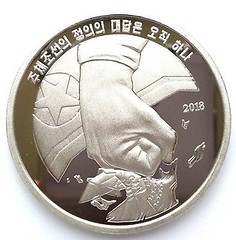
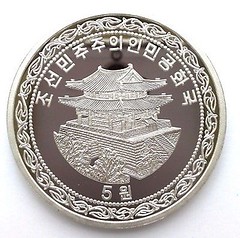
Mark Lomvo writes:
The North Korean coin does not say "Destroy the United States, the Only Answer," it says "Juche is the only way to Justice." "Juche" is the supposed 'official' North Korean ideology, which posits that Korea, Koreans, and things Korean take priority over everything and everybody else. It is actually an idea/ideology that predates the North Korean state, but the North appropriated it as their own ideology under Kim Jung-eun's grandfather, Kim Il-sung.
The North Korean medal's "actual" translation goes like, "Juche-Joseon's justice's only answer" - this is a little clumsy, but actually what it says. The North comes up with "Newspeak" (Orwellian reference implied!) every once in a while, and "Juche-Joseon" seems to be one of them. "Joseon" is the name that North Korea calls itself from the official name "Joseon Minju jueui inmin gonghwa kook (Democratic People's Republic of Korea).
After the North took the name "Joseon," the South resolved to call themselves something different: "Hankook," or the official name "Tae Han Min Kook" (Republic of Korea). Both "Joseon" and "Hankook" mean "Korea." Prior to the Japanese Occupation, (1910~1945) the country's name was actually "Joseon."
To read the earlier E-Sylum article, see:
THE 2018 KOREA SUMMIT CHALLENGE COINS (http://www.coinbooks.org/v21/esylum_v21n21a23.html)
Something Smells Funny Around Here
Etienne Le Pen writes:
I read about Cannabis and Scratch-n-Sniff stamps in the last E-Sylum. I’ve long since sold my stock but the most popular coin by far from the Benin series was the marijuana scratch-n-sniff. Looking forward to Colorado...
To read the earlier E-Sylum articles, see:
NOTES FROM E-SYLUM READERS: MAY 27, 2018 : Checking In On Bernard von NotHaus (http://www.coinbooks.org/v21/esylum_v21n21a17.html)
IN OTHER NEWS: MAY 27, 2018 : Scratch and Sniff Stamps Debut (http://www.coinbooks.org/v21/esylum_v21n21a37.html) 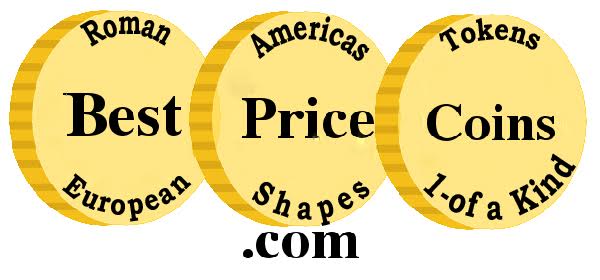
SUPERSTITIONS ABOUT MONEY
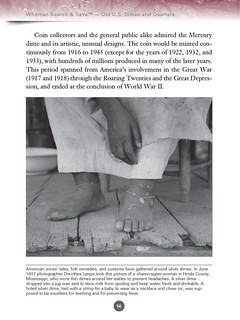 Dennis Tucker of Whitman Publishing writes:
Dennis Tucker of Whitman Publishing writes:
The commentaries on holed coins reminded me of this page from Whitman’s Search & Save: Old U.S. Dimes and Quarters, which features some American folklore about silver dimes. Photographer Dorothea Lange told about a Mississippi sharecropper in the 1930s who wore holed dimes around her ankles to prevent headaches.
David Lok writes:
I've been reading a few articles in The E-Sylum that are related in ways to superstitions about coinage. I've a small chapter in my book, and replicated on my website as well, that lists several superstitions concerning money. I've scoured several references on superstitions, magic and folklore, and of course asked several superstitious people, to get this list which, I'm sure, is far from complete. Nevertheless, I've always thought it an enjoyable subject.
Spiders:
If you see a small red spider, this is known as a money-spinner and it will bring you luck. To see a small spider crawl on you or on your clothes means that you will have good financial luck.
A brown spider in your home is an omen that money is heading your way.
Pigs:
To dream of being surrounded by pigs means that you will have someone asking you for money.
Enemies:
To plague an enemy with ill fortune, drop a bent coin into something of theirs, like their pocket, or a bucket, etc. If they do not discover it and throw it away before the sun sets, then they will be so distraught with ill fortune that they will cease to pester you.
Black Penny:
This was a real coin that existed and was owned by a family named Turnbull in Northumberland, England. The Black Penny was ”Not quite as big as a modern penny, but thicker. It had a kind of raised rim or border, and seemed composed of copper or zinc.” This penny supposedly cured madness in cattle. This was accomplished by dipping the coin into South running water. The water was then drawn off and given to the cattle to drink. This coin was loaned out quite often, and was eventually lost when being returned by mail around 1827.
Newborns:
The first gift made to a newborn is often a silver sixpence. It should be placed into the right hand, and this is not only done for good luck, but divination of their future money management can be ascertained from the child’s actions: If held tightly, the child will save money - or be a miser; If held loosely, the child will be generous; if dropped, the child will be a spendthrift.
Money Spell:
To ensure that you have money in your purse, you should place three leaves each of blackberry, bergamot, and bistort inside it.
To read the complete list, see:
Superstitions About Money (http://www.banknoteden.com/TMFOM/Superstitions.html)
For more information on the book, or to order, see:
The Many Faces of Money: A Who's Who and What's What of World Paper Money
(https://www.amazon.com/The-Many-Faces-Money-Whats/dp/1482530651/ref=sr_1_1)
To read the earlier E-Sylum articles, see:
MORE ON HOLED COINS AS SLAVE CHARMS (http://www.coinbooks.org/v21/esylum_v21n21a14.html)
BURIED CHILD'S MUMMIFIED HAND CLUTCHES COIN (http://www.coinbooks.org/v21/esylum_v21n21a36.html)
RECOVERY TOKENS FOR RESTRICTED GROUPS
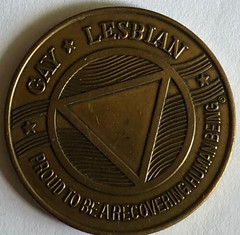

Michael Dlugosz writes:
Those tokens are referred to as chips. They are presented ceremoniously to a member of Alcoholics Anonymous by that member's sponsor upon the anniversary of his/her sobriety date. As for dating them or pinning down the company that made them, I'm not sure. They seem to be pretty widely manufactured. The chip system might also be use for other recovery groups like Narcotics Anonymous and the multitude of other spinoffs.
Mark Lomvo writes:
The "recovery tokens" that you featured are some of the first tokens that I ever saw as a child: Both of my parents were in Alcoholics Anonymous, and they were awarded these tokens for their first few months of sobriety and subsequent anniversaries of their sobriety. My parents also "twelve-stepped" other people going through treatment/sober life and awarded these medals to those they sponsored.
Gerald Tebben writes:
Recovery tokens are probably the hardest medal there ever was to earn. They’re given to Alcoholics Anonymous and Narcotics Anonymous members to celebrate months and years of sobriety.
I once took in a drunk and these tokens became his most prized possessions. They symbolized his freedom and celebrated his accomplishment.
I don’t know what the Gay Lesbian one is about. I’ve seen recovery tokens in supply house catalogs, but never in a public auction.
Michael Dlugosz writes:
My gut would say that they'd are simply chips made for meeting groups that are exclusively gay and lesbian. For the same reason that there are men's meetings and women's meetings ....because there are just some things that require the most accepting environment, whether that be restricting by gender or sexual orientation.
To read the earlier E-Sylum article, see:
NUMISMATIC NUGGETS: MAY 27, 2018 : Recovery Token (http://www.coinbooks.org/v21/esylum_v21n21a27.html)
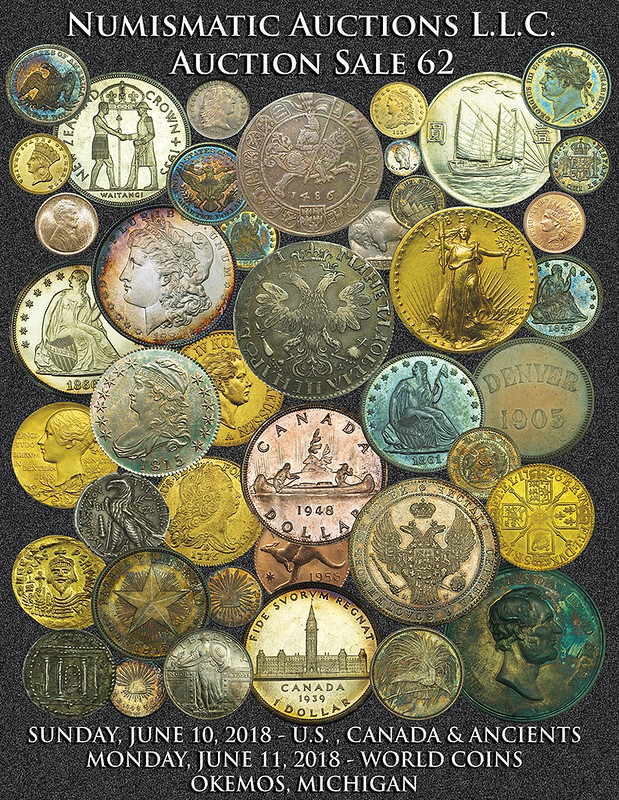
VOCABULARY TERMS: DIESHELL, EPOXY
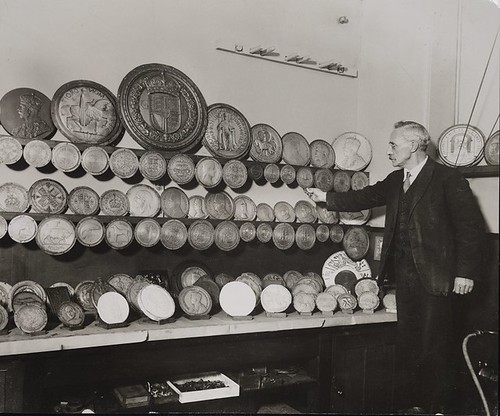
Galvano dieshells used for coins and medals struck by Britain's Tower Mint
Dieshell. A metal pattern from which a die is cut. Dieshells are made from plaster patterns (although wood or other media patterns have been used) by the electrogalvanic process forming a negative copper GALVANO. All coins and art medals were made with metal dieshells for most of the 20th century.
Historically these were first made from metal FOUNDRY CASTS. These were replaced by electrogalavaic patterns with the development of this technology and adopted by mints in the 1850s for greater fidelity of detail.
Dieshells must be negative to cut a die (also negative). If the pattern is positive it will cut a hub and is called a HUBSHELL. The dieshell is mounted on the die-engraving pantograph as the pattern to reduce the design and simultaneously cut the die. The dieshell usually is made with about a 1-inch FLANGE around its outer circumference that is necessary to mount it with clamps on the pantograph. Recently metal dieshells have been replaced with epoxy patterns.
See EPOXY. See also ELECTROFORMING for how a galvano dieshell is made; see PANTOGRAPH, DIE-ENGRAVING PANTOGRAPH for how it is mounted and employed to cut the die.
CLASS 04.3
Epoxy. A two-part resin composition with two uses in the medallic field: as a pattern for cutting a die and also as an adhesive for mounting medallic objects. For patterns the resin is mixed with a hardener and formed as a mold from a plaster model properly treated with a release agent. It sets to a very hard, permanent surface used in the coin and medal field as patterns for die reductions. A positive plaster model will result in the negative epoxy cast required to cut a negative die.
Epoxy is cured at room temperature. Afterwards the epoxy pattern is mounted on the die-engraving pantograph, the steel tracing point rides directly on the surface of the epoxy (thus the tough hardness is required). In contrast to metal patterns, which epoxy patterns replaced, there is somewhat more drag on an epoxy pattern than on a copper electroform galvano, the tracing point is steel and the epoxy is basically carbon. However, in both cases the surface of the pattern is covered with a lubricant, petroleum jelly or grease for the galvano. A continuous supply of liquid oil is applied to the face of the epoxy as a lubricant for the stylus to ride over in transferring the modulated relief of the design to the face of a die.
Epoxy is resistant to acids, alkalis and solvents. However, it is not known yet how permanent it is for long term storage. Epoxy was first developed in Germany in 1936, and in America in 1943. Its use in industry for tooling of maser models was gradual over the following years. Likewise mints were slow to adopt this technology. It occurred gradually at the Philadelphia Mint, the use of galvano patterns ceased and all Janvier machines were mothballed in 2006.
However knowledgeable medalists, who are experienced with both technologies, realize the advantage of galvano patterns for the reason of greater fidelity to their models, with a sharpness of design reliefs and deeper
cavities. This is caused by molding’s required meniscus of molding corners and cavities. See CASTING.
CLASS 04.3
Looking for the meaning of a numismatic word, or the description of a term? Try the Newman Numismatic Portal's Numismatic Dictionary at: https://nnp.wustl.edu/library/dictionary
Or if you would like a printed copy of the complete Encyclopedia, it is available. There are 1,854 terms, on 678 pages, in The Encyclopedia of Coin and Medal Technology. Even running two a week would require more than 19 years to publish them all. If you would like an advance draft of this vital reference work it may be obtained from the author for your check of $50 sent postpaid. Dick Johnson, 139 Thompson Drive, Torrington, CT 06790.
HERMAN "HENRY" C. KAMMEYER (1879-1949)
 Herman "Henry" C. Kammeyer (1879-1949), was born at Lace, Downers Grove, Cook County, Illinois, on October 15, 1879, son of immigrant farmers from Hanover, Germany, Friedrich Herman Kammeyer (1841-196),
and Dorothea Kammeyer (1853-1941).
Herman "Henry" C. Kammeyer (1879-1949), was born at Lace, Downers Grove, Cook County, Illinois, on October 15, 1879, son of immigrant farmers from Hanover, Germany, Friedrich Herman Kammeyer (1841-196),
and Dorothea Kammeyer (1853-1941).
In 1885, he and his family moved to Fredericksburg, Iowa.
In 1895, he moved to Brookfield, Illinois, then called Grossdale, and later on at La Grange, where he worked as a clerk in a grocery owned by the Mandel Brothers. While there he became fascinated by coins he encountered over the counter and began collecting.
From 1903 to 1906 he continued working in the grocery business opening his own store at Hinsdale, Illinois, in a town where he remained the rest of his life.
On May 5, 1904 he married Wilhelmine "Minnie" Dorothea Dieke (1881-1961).
From 1916 to 1928, he opened a garage selling automobiles on Chicago Avenue and Lincoln Street, keeping both the grocery store and garage while he still kept a sideline selling insurance.
From 1928-1949, he remained in the insurance business at Hinsdale.
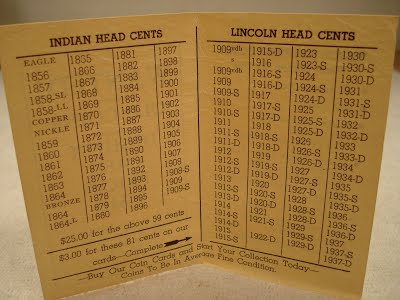
He applied to the ANA in September 1937, and in October he became ANA Member No. 6501.
On January 4, 1939, he became a member of the Chicago Coin Club.
From 1944 to 1949, when he retired he suffered five strokes.
He died on Wednesday night, September 7, 1949, of cerebral hemorrhage. He was a little more than a month short of 70 years of age. He was a member of the Zion Lutheran Church. He is buried in the Zion Lutheran Cemetery.
To read the complete article, see:
KAMMEYER, HERMAN C. (https://sites.google.com/a/numismaticmall.com/www/numismaticmall-com/kammeyer-herman-c)
The entire inventory of the Lupia Numismatic Library is for sale. Individual items will be available before the remaining archives are broken up into parcels sold at philatelic auctions in the U. S. and Hong Kong. Check NumismaticMall.com frequently as dozens of new items with estimates will be posted daily until everything is sold.
All inquiries will be given prompt and courteous attention. Write to: john@numismaticmall.com .

HARVEY STACK'S NUMISMATIC FAMILY, PART 19
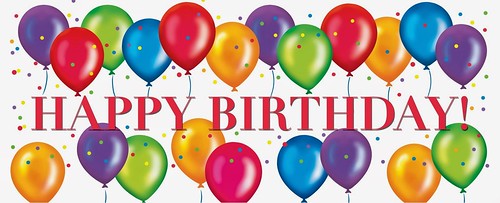

I concluded my last article by noting that we were often asked whether the Anderson Dupont Collection included gold coins. It did, but the feeling was that offering the gold coins at auction along with all the other material might drain the funds that clients had available.
However, the Anderson Dupont Collection had a complete set of gold dollars, a complete set of $2.50 gold quarter eagles (1796 to 1929), a set of $3 gold (lacking the 1870-S to be complete) and a set of the four $4 gold Stellas. Each set was housed in a beautiful felt-lined leather box, and virtually all the coins were Mint State or Proof. They were exciting to behold. Because of the value of the gold coins, we felt that we could either sell them intact or wait until 1955 to offer them at public auction
But that was not what happened. In the spring of 1954 Mr. Josiah K. Lilly made one his springtime visits to New York and stopped by to say "Hello." He said he was very pleased with how we were adding coins to his collection, which we regularly updated him on by mail. On this visit, as usual, he wanted to see what we had obtained since our last correspondence, discuss our progress, and set some new goals for his collection. We were able to show him additional doubloons we had obtained, and interesting coins from the foreign countries that were trading with America. He suggested we might add to the collection coins from the later 19th century and 20th century as well.
When he sat down with my father and uncle to talk about expanding the collection, I was invited to join the discussion. He remarked that he had concentrated on the Spanish American gold coins along with gold from England, France, Portugal and the Netherlands, countries who traded with and helped develop America. At this meeting he wanted to talk about the gold coinage of the United States. He was interested in the U.S. Mint and the gold coins struck there as the colonies became an exciting and expanding new nation. He inquired as to what it would take to build a set of U.S. gold coinage.
My father and uncle reviewed the various series with Mr. Lilly. He listened intently. He had heard about how Stack’s had been involved in acquiring the Clapp Collection for Louis E. Eliasberg some years back, an important step in the development of Mr. Eliasberg’s incredible coin collection. We told him about that transaction, as well as our purchases from the Colonel E.H.R. Green Collection, and how we sold the full collections of $5 and $10 gold coins to King Farouk. We told him about the huge auction that took place in Cairo when the Farouk collection was sold and how we were unable to go to Cairo for the sale, because of the commitments we had at home. Mr. Lilly remarked that he read some of the news stories about the Cairo sale, and had seen the magazine published years before about the Eliasberg Collection.
So he asked us: "Tell me, gentlemen, what would it take to get a set of United States gold coins together?" My father and uncle looked at each other, smiled, and said, ‘We have in stock a great way to get you started in U.S. gold coins." Mr. Lilly was immediately interested and asked to see what Stack’s had available.
I was sent to the vault to take out the four leather boxes which contained the $1, $2.50, $3 and $4 gold coins from the Anderson Dupont Collection. Each set glistened in the light as we showed them to Mr. Lilly; many were so choice they just sparkled. We watched while he looked at them and answered his questions about the series, explaining the rarity and the quality of the coins as he examined them.
He agreed that this might be a good way to get started. But, he had questions about the other denominations of gold coins and what it would take to build a collection of them, including rarities that he presumed would require some waiting before they became available on the market. Of course, he also wanted to know what it would cost for the four sets he was currently examining, when they would be delivered, and when he would have to send his check.
It should be remembered that at the time, common gold coins were priced considering the current price of $35 per ounce of gold. None of the coins in the four collections came close to an ounce of gold. At the time, early date and rare quarter eagles sold for a few hundred dollars each, as did $3 gold pieces. Getting $1,000 for a Stella would be a good price – for a coin that could be worth close to $200,000 today. Many of the coins in these sets would have very high values today considering the greatly increased value of gold as well as much higher demand from collectors. Even so, the price that we had arrived at after we acquired the four sets was $50,000 – quite a large sum of money at the time.
Mr. Lilly thought for a bit, looked at the boxes that contained the sets and said, "I'll take it!"
We then told him about how Clifford T. Weihman had the second sets of $5 and $10 gold coins from the Col. E.H.R. Green "hoard." We felt that he might consider selling them. In addition, we were expecting a consignment the next year of a quite complete set of $20 gold from a client in Texas. We thought it was possible that Mr. Lilly could buy that set intact, which would put him a long way toward his goal, rather than having to build the collection one coin at a time.
Mr. Lilly thought these options would be good to investigate. He thanked us for our efforts and told us to “keep up the good work.” He then got up, shook each of our hands and left with a smile on his face.
As 1954 came to an end we could look back on an incredible year at Stack’s, with great business and exceptional auctions. For me personally, it was also a very important year. I grew up fast, increasing my knowledge of numismatics. I also learned a lot about dealing with collectors, how to treat them when they visited, to respect their wishes and do what I could to serve them.
To read the complete article, see:
Harvey Stack Remembers: Growing up in a Numismatic Family, Part 19 (http://www.stacksbowers.com/News/Pages/Blogs.aspx?ArticleID=2979)
To read the earlier E-Sylum article, see:
HARVEY STACK'S NUMISMATIC FAMILY, PART 18 (http://www.coinbooks.org/v21/esylum_v21n20a20.html)
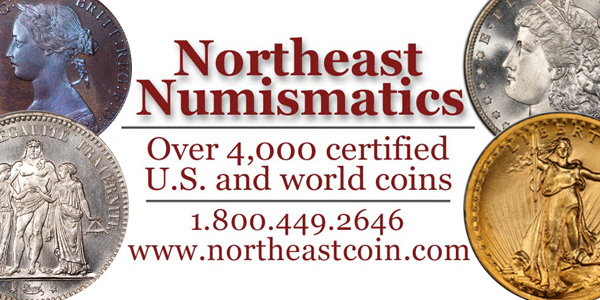
HAPPY BIRTHDAY: MAURICE STORCK
On May 20, 2018 dealer Steve Rye of Scottsdale, AZ wrote:
Maurice, now of Tucson, celebrated his 96th birthday today. How? By being a vendor at the Camelback coin show in Chandler, AZ. (He sells stamps only now). There was a little ceremony with cake etc. The show is held at an American Legion Hall and they participated in honoring their fellow veteran.
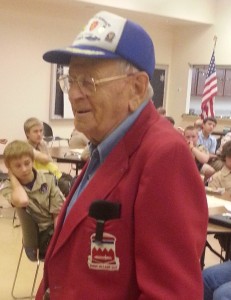 Storck, Arthur Maurice, Sr. - (b. 1922) Of Portland, Maine, Storck, listed his occupation as "stamp and coin" in their 1962 city directory. His parents were both born in Russia and listed their original
name as "Stock". He, along with several notable numismatists, (Abe Kosoff, Sol Kaplan, Ambassador and Mrs. R. Henry Norweb, Hans M.F. Schulman, John J. Pittman, James P. Randall, Robert Schermerhorn, Paul Wittlin,
George J. Bauer, Gaston DiBello) attended the King Farouk Sale held in Cairo, Egypt. He joined the ANA in 1948 and contributed to the Red Book of 1960 and the Blue Book of 1964.
Storck, Arthur Maurice, Sr. - (b. 1922) Of Portland, Maine, Storck, listed his occupation as "stamp and coin" in their 1962 city directory. His parents were both born in Russia and listed their original
name as "Stock". He, along with several notable numismatists, (Abe Kosoff, Sol Kaplan, Ambassador and Mrs. R. Henry Norweb, Hans M.F. Schulman, John J. Pittman, James P. Randall, Robert Schermerhorn, Paul Wittlin,
George J. Bauer, Gaston DiBello) attended the King Farouk Sale held in Cairo, Egypt. He joined the ANA in 1948 and contributed to the Red Book of 1960 and the Blue Book of 1964.
Maurice A. Storck, Sr. was born and reared in Portland, ME. He was selling newspapers as a boy, and discovered stamps in the local shop. It turned to coins, and he began dealing in coins in grammar school and high school, and eventually in the military in the 1930s and 1940s.
He was the first man to pay $100 for a life membership in the ANA (the price had just been raised). In 1951 he bought out William Rabin’s collection (in Philadelphia). Storck began traveling internationally to purchase coins. His trip to Cairo, Egypt in 1954 was one of the most memorable of his life. Storck is the last surviving dealer who attended the coin and medal segment of The Palace Collections of Egypt auction.
The event was held Feb. 24 - March 6, 1954, commonly known as The Farouk Sale. There were people marching down the streets with guns and swords, but he wouldn’t leave without buying the coins he had come for. Two detectives watched both hands while he looked at the coins. On the last day of the sale, everyone had been so nice to the American dealers they threw a party on the lawn for the guards, finance department men, detectives, etc., which amounted to a big “drunk.” He took his coins with him when he left, but they got lost. He found them in a local airport one week later, where anyone could have taken them.
In 1959 Ken Bressett hired Storck to become a distributor for Whitman Publishing Company’s (now Western Publishing Co.) coin supplies. He did this for several years, retiring from the coin business in 1970. He married his wife, Nancy, in 1943; they moved to Arizona in 1978. They did a lot of traveling, until her death in 1990.
He has two sons and three grandchildren, and he travels around Massachusetts and Rhode Island. He also collects Masonic Chapter pennies, having amassed a collection of 15,000 of them.
Steve Rye has been a coin dealer in the Phoenix area for over two decades, and became acquainted with Maurice through those circle. He contributed these additional notes. Thanks! -Editor
The monthly bourse in the Phoenix area is held at the American Legion Hall (post 35, Chandler, Az.) and they stepped up to honor him for his 96th birthday. I had a photo from Hawaii when they honored him there a few years ago and the Legion incorporated that into a plaque. In the photo he is flanked by a four-star General and a Colonel. Apparently Maurice as a serviceman was sort of a Radar O'Reilly who brokered supplies.
Maurice told me once that he supplied most of the coins for the senior Sundman of Littleton NH when Sundman decided to incorporate coins into his stamp business.
In the book Illegal Tender about the 1933 double eagle there is an illustration of a page from the Farouk catalog in which there is a handwritten note that Storck had bought something.
I am absolutely stunned by the fact that he is a living survivor of the 1954 Farouk sale. And apparently he has been the only American survivor of the bidders for a long time. He remembers buying a lot of early $5 gold coins.
It is difficult, more often than not, to pry information from Maurice. He continues to be low-key and humble.
He contacts customers ahead of the bourse to tell them what he has. So at 96 he is still an active stamp guy.
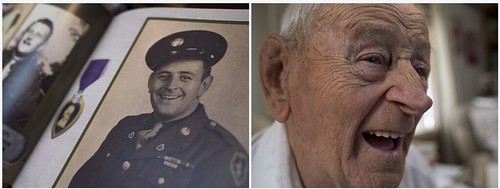
To read the earlier E-Sylum article, see:
COIN DEALER MAURICE A. STORCK (http://www.coinbooks.org/v20/esylum_v20n21a21.html)
To read the other articles and information, see:
MAURICE A. STORCK ENDURED AND SURVIVED THE JAPANESE ATTACK ON PEARL HARBOR, DECEMBER 7TH, 1941.
(http://www.rightvoicemedia.com/2014/05/corporal-storck-remembers-pearl-harbor/)
Pearl Harbor survivor Maurice Storck
(https://www.azcentral.com/picture-gallery/news/local/phoenix-best-reads/2016/12/01/pearl-harbor-survivor-maurice-storck/94752030/)
Maurice A. Storck Collection (https://memory.loc.gov/diglib/vhp/bib/loc.natlib.afc2001001.33502)

GEER STEYN RECEIVES 2018 J. SANFORD SALTUS AWARD

Image credit: George Cuhaj
Dutch artist Geer Steyn became the fifty-seventh recipient of the J. Sanford Saltus Award for excellence in medallic art at the biannual conference of the International Art Medal Federation (FIDEM) in Ottawa, Ontario on May 29, 2018.
Donald Scarinci, Chairman of the Saltus Award Committee of the American Numismatic Society presented the award at the American Delegation reception in the Canadian Museum of Nature.
The award was created with a grant to the American Numismatic Society by J. Sanford Saltus in 1913 to recognize and encourage excellence in the art of the medal. The first Saltus award was presented in 1919; the silver award medal was designed by the prominent German-born numismatic and architectural sculptor Adolph Alexander Weinman.
Geer Steyn’s (b. 1945) studies in sculpture began at the Rijksakademie van beeldende kunsten in Amsterdam, where he initially followed the Academy’s traditional emphasis in figurative work. Thereafter he studied with Fritz Wotruba (1907–1975), a preeminent Austrian abstract sculptor, who greatly influenced Steyn’s subsequent work. Besides his work in medallic art, Steyn is widely known and praised for his large-scale sculptures in stone that have been featured in exhibits alongside his medals.
He joins the ranks of other significant artists who have been awarded the medal including, among dozens of others, James Earl Frazer (1919), Victor D. Brenner (1922), Paul Manship (1925), Lee Lawrie (1937), Donald DeLue (1967), Kauko Räsänen (1986), Gustaaf Hellegers (2001), and João Duarte (2011).
Three previous recipients of the Saltus award were on hand for the presentation of the award—Eugene Daub (1991), Jeannie Stevens-Sollman (1999), and Ron Dutton (2008)—who joined Scarinci in praising Steyn’s work.
As Scarinci noted, what sets Steyn’s work apart is their tactile quality. “While these hand-held pieces work visually,” he continued, “it is the act of holding them and touching them where the real experience lies. It is communication beyond the visual and beyond the boundary of mere words or text. Geer Steyn’s medals are sculpture!”
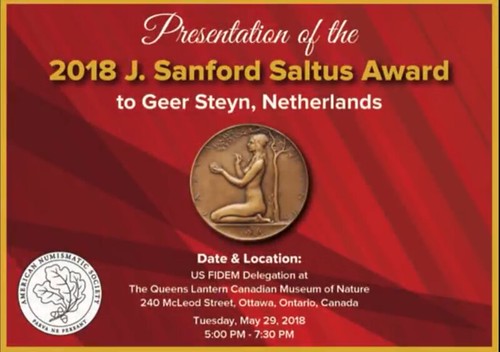
To watch the complete videos, see: 2018 J. Sanford Saltus Award (https://www.youtube.com/watch?v=L54JFMm3yPo)
and Geer Steyn (https://www.youtube.com/watch?v=n0uxRIkwJPg)
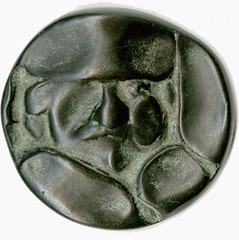

Rembrandt and the Lark medal, 1995


Maria Callas medal, 1995
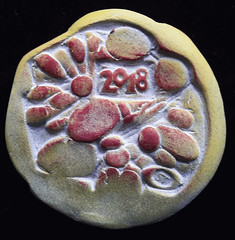

Bumble Bee Year Medal, 2018
To visit Geer Steyn's web site, see:
http://www.geersteyn.com
SACAGAWEA DOLLAR MODEL RANDY’L TETON INTERVIEW

In this edition of East Idaho Newsmakers, Nate Eaton speaks with Randy’L Teton. Teton is a Fort Hall native and is featured on the US Sacagawea dollar gold coin. She is the only living person to currently appear on a United States coin.
During their conversation, Teton shares the fascinating story of how she ended up on the money. She also speaks about her current job, which is being the spokeswoman for the Fort Hall Shoshone-Bannock Indian Tribe, and a variety of other issues.
To watch the complete video, see:
Newsmakers: The fascinating story of how this local woman ended up on the dollar gold
coin (https://www.eastidahonews.com/2018/05/newsmakers-the-fascinating-story-of-how-this-local-woman-ended-up-on-the-dollar-gold-coin/)

ASSISTANCE SOUGHT IN IDENTIFYING TOKEN ISSUERS
I am putting the finishing touches on several books, some started years ago. With the help of Dave Schenkman I am doing the second edition of Put Another Token In, the first of which was a an award-winning book years ago in 1975, published by the Token and Medal Society (which is set to do the new book as well).
Described are several hundred varieties of tokens once used in coin-operated pianos. Put a nickel in the slot, and the patron was rewarded with a snappy two-minute tune. From the late 19th century into the 1920s thousands of such pianos were popular in taverns, hotels, amusement parks, bordellos, and other places of public entertainment. These tokens are nickel-size, usually in brass or nickel alloy, typically say GOOD FOR ONE TUNE, GOOD IN THE PIANO, or a similar musical phrase.
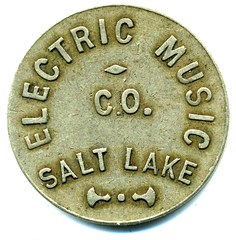
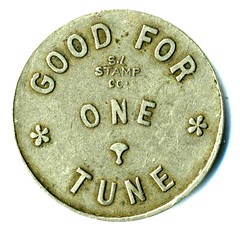
A music token that can be identified as to issuer and location. Some others remain mysterious.
I and Dave Schenkman have tracked down the location of most token issuers, but the following have eluded us (the numbers such as B-120 are the catalog numbers for cross-reference. It would seem that such issuers as Beck & Stener and Mayberry & Boyer probably advertised somewhere or were otherwise listed, and can be found today. Other names such as Carl’s Place, Empress Café, and Geo. Weaver may be forever unattributable, although those that have street names might be able to be traced.

A Seeburg coin-operated piano.
If you have any information on any of these, let me know what you have. If you can send me to advertisements or listings, so much the better! I will answer all e-mails. Thank you for your interest!
B & H Music Co. • B-230: Be [unknown]mann (Cincinnati, OH) • B-350: Beck & Stener • B-380: Ernie Bennett • B-470: The Big Onion • B-490: Bitz’s Café • B-500: Al. Blase [6th & 7th, Washington] • B-670: Brown’s Shining Parlor • B-780: The Buffalo
C-450: Carl’s Place • C-500: Carres Bros. • C-550: C.C.G. (Omaha, NE?) • C-820: C.J. Connell • C-850: Corner Café • C-855: Corner 151 Café • C-890: Cozy Corner Bar
D-130: Daugherty Bros. • D-350: Chas. De Cook • D-400: Dixie Music Co.
E-570: Empress Café [12th & Jackson]
F-250: W.C. Fear • F-400: Fico Bros. • F-480: Fitzpatrick PA 9618 [may be the number of a lodge in Pennsylvania?]
G-310: Geo. & Joe’s Place
H-150: H. & J. Place • H-270: P.J. Hartigan • H-500: Hinkee Dee Club • H-680: Hoyt & Duffey
J--250: Jackson St. Drug Store
K-300: H.L. Kelley Piano Inc. • K-440: Charles Kennedy’s • K-800: Kuhlmann’s Café
M-200: Malconta Club / C.V. Alderman • M-300: Manhattan Café • M-320: Manhattan Pool Room • M-360: H.E. Mann Studios [token made by the Los Angeles Rubber Stamp Co.] • M-475: Marshall Music Co. • M-520: Mayberry and Boyer Saloon • M-540: Maynard’s Piano Orchestra [2004-2020 Market St.]• M-580: Chas. McGarvey • M-590: McKenzie’s Amusement Parlors • M-600: McNabb’s • M-680: Meile Bros. Café • M-730• E.T. Messinger • M-740: Metz & Weber • M-860: The Monogram / J.B.
N-620: Norton Pharmacy Inc.
O-600: Jos. H. Osterfeld
P-140: P. & H. Music Co. • P-300: Palm Garden • P-390: Patty’s Place • P-840: Puss & Davis
R-150: H.C. Ragland Café • R-280: W.H. Reed Café [347 15th Ave.] • R-500: Lee Richardson • R-550: Rilobon • R-660: Ross Ave. House, James Potter, Prop. • R-690: Wm. J. Ross Café [2901 Eastern Ave.] • R-720: Mrs. Rouse (SW corner Water & Plum] • R-760: Royal Music Hall • R-840: Ada Russel
S-260: A. Schultes • S-380: Soll R. Scott • S-510: Shawnee Drug Co. [12 West Main St.] • S-720: Smoke House • S-780: W.E. Spencer [20 West 9th St.]
T-160: J.D. Taylor Cigar Store • T-300: John Thieman Café • T-310: John Thieman Café • T-430: Tivoli Machine Co. [207 2nd Ave South]
W-440: W.E.& S. Co. • W-480: Geo. Weaver • W-500: C. Webber • W-530: Ben Weber [Clifton Ave. & Calhoun St.] • W-530: Weber Music Co. • W-540: Weber’s Café [SE corner 4th & John] • W-680: Western Sales Corp’n • W- 740: A.C. Wilson [Watertown] • W-750: J.L. Wilson
Z-420: P. Zeisler [8th & Linn]
Please send information to: Dave Bowers, qdbarchive@metrocast.net

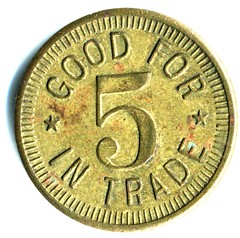
THE BOOK BAZARRE
AI, NEWTON AND THE TRIAL OF THE PYX
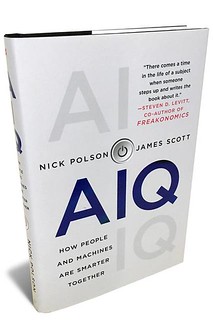 Their book has two goals. First, to document the reach of AI in everyday life: It’s now used to predict corn yields, track gender bias in films, map disease outbreaks and sort vegetables, among hundreds of other
applications. But “AIQ” also aims to demystify AI. Each chapter focuses on an algorithm in a different industry, tracing the roots of each back to an innovator from before the computer era. One chapter goes back to Isaac
Newton’s stint at the Royal Mint, another to Florence Nightingale’s medical reforms in Crimea, and so on. Each historical figure had a problem to solve and developed a novel solution. And luckily for later generations, the
solution proved useful in fields far beyond the original.
Their book has two goals. First, to document the reach of AI in everyday life: It’s now used to predict corn yields, track gender bias in films, map disease outbreaks and sort vegetables, among hundreds of other
applications. But “AIQ” also aims to demystify AI. Each chapter focuses on an algorithm in a different industry, tracing the roots of each back to an innovator from before the computer era. One chapter goes back to Isaac
Newton’s stint at the Royal Mint, another to Florence Nightingale’s medical reforms in Crimea, and so on. Each historical figure had a problem to solve and developed a novel solution. And luckily for later generations, the
solution proved useful in fields far beyond the original.
The authors discuss, for instance, one of the problems that bedeviled Newton at the Mint: “anomaly detection”—the extreme variation in the weight and amount of silver used in each coin. For quality control, rather than weigh coins individually, the Mint would set aside a few thousand at random and weigh them all together—a process called the Trial of the Pyx. Unfortunately, Newton didn’t quite understand the mathematics of interpreting these results (a rare mistake for him), and it fell to later mathematicians to make the Trial accurate. But once they did, it opened a bonanza for later researchers: The authors write that “averaging lots of measurements together is the most important idea in the history of data science,” and can be used for everything from detecting credit-card fraud to hunting for radioactive bombs at ports.
Grounding AI in tried-and-true methods makes it seem less alien: Computers are simply faster ways to solve familiar problems. Hence the book’s title, a portmanteau of AI and IQ—the point being that we need both.
To read the complete article (subscription required), see:
‘AIQ’ Review: Getting Smarter All the Time (https://www.wsj.com/articles/aiq-review-getting-smarter-all-the-time-1527717048)
EPNNES DONATION SUPPORTS ANA SUMMER SEMINAR
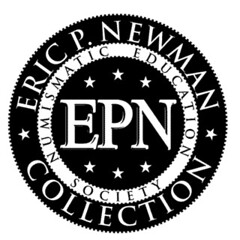 The Eric P. Newman Numismatic Education Society has donated $50,000 to support the American Numismatic Association’s Summer Seminar. The donation includes a “matching” funds campaign to supplement the proceeds of
the Young Numismatist Benefit Auctions.
The Eric P. Newman Numismatic Education Society has donated $50,000 to support the American Numismatic Association’s Summer Seminar. The donation includes a “matching” funds campaign to supplement the proceeds of
the Young Numismatist Benefit Auctions.
The money also provides for the establishment of all-expense-paid scholarships for Young Numismatists (YNs) to attend the event. The “Eric P. Newman Young Numismatist Scholarship Program,” will help students who otherwise might not be able to attend the Summer Seminar, which celebrates its 50th anniversary this year.
The late Eric P. Newman, who became a member of the ANA in 1935, is widely remembered and respected for his work as an author, researcher and speaker. In 1958, he and his wife, Evelyn, established the Eric P. Newman Numismatic Education Society (EPNNES), which is dedicated to helping fellow numismatists realize their own potential.
As an ANA Summer Seminar instructor, Newman was an advocate for the program, which seeks to equip numismatists with the knowledge and skills necessary to become successful in the numismatic community.
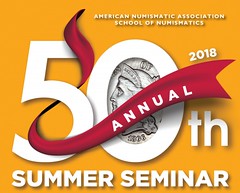 Held annually on the campus of Colorado College in Colorado Springs (adjacent to the ANA), the Summer Seminar is a once-a-year opportunity for numismatic learning and camaraderie that offers students a varied
selection of weeklong courses designed for discovery or continued study. For many students, the Summer Seminar is a life-changing event. It has catapulted the careers of several of the nation’s most respected collectors,
authors and dealers.
Held annually on the campus of Colorado College in Colorado Springs (adjacent to the ANA), the Summer Seminar is a once-a-year opportunity for numismatic learning and camaraderie that offers students a varied
selection of weeklong courses designed for discovery or continued study. For many students, the Summer Seminar is a life-changing event. It has catapulted the careers of several of the nation’s most respected collectors,
authors and dealers.
“The ANA is so grateful to the Eric P. Newman Numismatic Education Society for its gracious donation,” said Kim Kiick, ANA executive director. “This donation helps encourage numismatic study and enables young collectors to grow and advance in their numismatic journeys. We welcome that support.”
The Young Numismatist Benefit Auctions are coordinated entirely by young collectors – everything from acquiring auction items and cataloging collected items, to organizing and conducting the auction.
Last year, the auctions raised $27,519. The donation from the Eric P. Newman Numismatic Education Society will double the amount raised this year by matching auction revenue dollar for dollar, up to $50,000. Anyone is allowed to bid on items. Proceeds support Young Numismatists scholarships and other seminar events.
Auction items are still being accepted for the two-week event, which kicks off on June 16. For information about donating an auction item, call Amber Bradish at (719) 482-9865 or email abradish@money.org.
Andy Newman, who is the son of Eric Newman and president of the Eric P. Newman Numismatic Education Society, noted that his father was a huge supporter of young collectors. “Dad cared deeply about building knowledge and involvement in young numismatists. He loved giving numismatic badges to Boy Scouts and instructing at the ANA Summer Seminar,” he said. “He would be greatly honored by the association of his name with this fine program.”
“The support from EPNNES for the Summer Seminar honors Eric Newman as a distinguished and lifelong leader in the field of numismatics,” said ANA President Gary Adkins. “It also allows the ANA to continue to offer high-quality resources and programs to its members, as well as enhance and grow these offerings. We’re very thankful for this support.”

NUMISMATIC WALKING TOUR OF LOWER MANHATTAN
MONUMENTS, MEDALS, METROPOLIS:
A NUMISMATIC WALKING TOUR OF LOWER MANHATTAN
Peter van Alfen
July 14, 2018
Over the years, Chief Curator Peter van Alfen has developed, as part of the ANS Summer Seminar, a walking tour that vividly illustrates the many connections between numismatic and medallic art of 20th century and the architectural and free standing sculpture found throughout lower Manhattan. This year, Dr. van Alfen will hold a special Money Talks tour that will not only illustrate these connections, but will delve as well into the larger social, economic, and political conditions of the early 20th century City Beautiful movement, and will take a look back to the earliest days of settlement in Manhattan.
Leaving Manhattan, the tour will continue across New York harbor, with discussion of the islands of the harbor, their fortifications, and sea-faring New York, before continuing a short distance through the Saint George historical district in Staten Island. As a finale, the tour will end with a BBQ hosted at one of the Victorian-period houses of the district.
The tour will begin at City Hall Park and wind its way down to South Ferry; this will be followed by 30 minutes of sitting on the Staten Island Ferry; followed again by walking in Staten Island. The total walking distance will be about 3 miles.
For more information, see:
http://numismatics.org/moneytalks/
GAMBLING ON BASEBALL MEDALS
A June 1, 2018 Numismatic News article by Editor Dave Harper describes a new marketing scheme selling packs of medals in a similar way, seeded with random silver and gold medals. -Editor
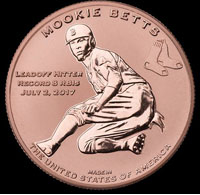 A firm called Baseball Treasure has created 30 medals, one player from each team, that it calls coins and is selling them.
A firm called Baseball Treasure has created 30 medals, one player from each team, that it calls coins and is selling them.
The medals are licensed by Major League Baseball, so you know this is serious.
The question is, will potential buyers like to buy unknown medals as we once bought baseball cards?
You can buy a pack of three one-ounce copper medals for $19.99.
That price is a bit more than a nickel for five cards from my childhood.
A six-pack is $39.99. A pack of nine is $59.99.
You can even buy a case containing 432 packs for $2,999.99.
But there is a further inducement to potential buyers.
The desire to get a favorite player is augmented by the possibility of getting a silver or a gold medal instead of a copper one in the packs you buy for a copper price.
The firm says the odds of obtaining a .999 fine silver version of the medal are one in 432.
It is probably no accident that you can get 432 in the $2,999.99 case.
The odds of getting a gold medal are one in 21,600.
Who will be a buyer of these baseball medals?
To read the complete article, see:
Baseball medals go on sale (http://www.numismaticnews.net/article/baseball-medals-go-on-sale)
To read the E-Sylum April Fools article, see:
COIN COLLECTING GOES DIGITAL (http://www.coinbooks.org/v21/esylum_v21n13a37.html)
To read the original article, see:
From wax packs to mobile apps: Baseball card collecting goes digital to reconnect with kids
(http://www.chicagotribune.com/business/ct-biz-baseball-card-collecting-industry-20180326-story.html)
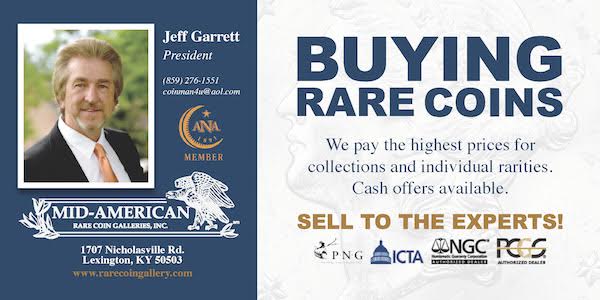
SELECTIONS FROM THE BEASLEY AND FAIRMONT SALE
Lot 45: 1800 Capped Bust Right Half Eagle
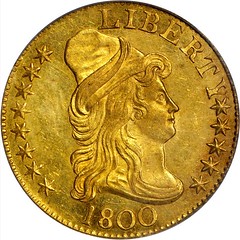

1800 Capped Bust Right Half Eagle. BD-2. Rarity-3+. Blunt 1.
In the 2006 reference Early U.S. Gold Coin Varieties: A Study of Die State, 1795-1834, John W. Dannreuther estimates that the Mint struck 15,000 to 30,000 half eagles from 1800-dated dies. Although widely regarded as a type issue in the Capped Bust Right series, we caution bidders that the 1800 is scarce in an absolute sense, as are most pre-1834 U.S. gold issues. Those that are not scarce are rare. Only 175 to 250 examples of BD-2 are believed extant in all grades, underscoring the significance of this offering for Mint State type collectors and early half eagle enthusiasts.
To read the complete lot description, see:
1800 Capped Bust Right Half Eagle. BD-2. Rarity-3+. Blunt 1. MS-62 (PCGS). (https://auctions.stacksbowers.com/lots/view/3-ABR4M)
Lot 1013: W. LEVIS Counterstamp
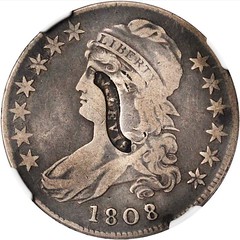
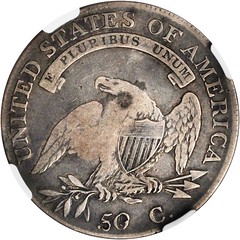
Pennsylvania--Philadelphia. W. LEVIS on an 1808/7 Capped Bust half dollar. Brunk L-313, HT-906. Rarity-7.
The counterstamp in a curved ribbon is neatly centered in the center of the obverse, directly over Liberty's head and neck. The host coin is richly and originally toned with ample boldness of detail remaining in all areas save for on the reverse opposite the counterstamp. The NGC qualifier concerns a few tiny digs on the reverse that have warped the appearance of the digits 50 in the denomination. Brunk reports only two examples of this counterstamp on half dollars--coins dated 1807 and 1826--while Rulau lists just three--1807, 1818, 1826. The present host coin, an 1808/7, is unlisted in either reference.
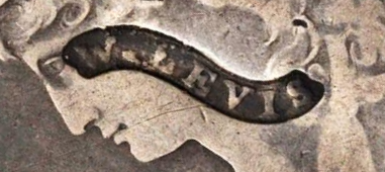
To read the complete lot description, see:
Pennsylvania--Philadelphia. W. LEVIS on an 1808/7 Capped Bust half dollar. Brunk L-313, HT-906. Rarity-7. Fine Details--Reverse Damage (...
(https://auctions.stacksbowers.com/lots/view/3-ABAZ6)
Lot 1036: 1787 Immunis Columbia Copper
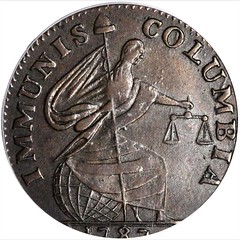
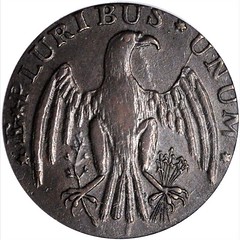
1787 Immunis Columbia Copper / Large Eagle Reverse. W-5680. Plain Edge, Narrow Planchet.
The origin of the Immunis Columbia coppers is not known, but they are clearly tied in with the Nova Constellatios and the Vermont coppers. This would seem to place their origin here in America, but it is possible they are from England as thought by Walter Breen. Likely intended for circulation, most survivors show considerable wear, making the present specimen a real treat. If these had been intended as a proposal for contract coinage it would seem that fewer would have been struck and higher grades would be the norm. A few are known to have been overstruck on New Jersey coppers (all Maris 26-S) which also lends credence to their American origin.
To read the complete lot description, see:
1787 Immunis Columbia Copper / Large Eagle Reverse. W-5680. Plain Edge, Narrow Planchet. AU-58 (PCGS).
(https://auctions.stacksbowers.com/lots/view/3-ABBZM)
Lot 1090: 1857 Flying Eagle Cent

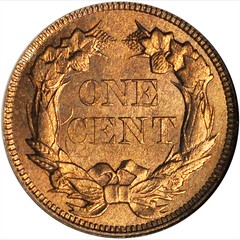
The brief regular issue Flying Eagle cent series comprises just two circulation strike issues, the 1857 and 1858 both readily available in grades through MS-64. Gems are scarce, however, and the lovely example offered here sure to have no difficulty finding its way into a high quality type set.
To read the complete lot description, see:
1857 Flying Eagle Cent. Type of 1857. MS-65 (NGC). (https://auctions.stacksbowers.com/lots/view/3-AB8DA)
Lot 1242: 1829 Capped Bust Half Dime
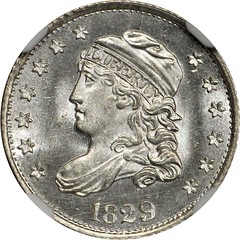

The first half dime struck since 1805 and the first issue in the Capped Bust series, the 1829 is very popular for type purposes. Fortunately, enough examples were set aside at the time of production or otherwise managed to survive without seeing commercial use that acquiring an Uncirculated coin in grades through MS-64 should prove relatively easy under normal market conditions.
To read the complete lot description, see:
1829 Capped Bust Half Dime. LM-9. Rarity-5. MS-67 * (NGC). (https://auctions.stacksbowers.com/lots/view/3-AB9ZQ)
Lot 1310: 1834 Capped Bust Quarter
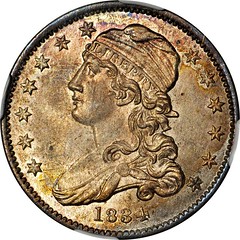
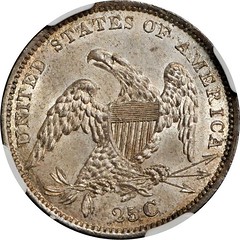
The cornerstone of the second Philadelphia Mint building on Juniper and Chestnut streets was laid on July 4, 1829, by Mint Director Samuel Moore. At around the same time, the Mint, in its existing facility, introduced several technological improvements to its processes, chief among which was the close collar (a.k.a. "collar die") which simultaneously imparted reeding to the coins' edges (when desired) and gave them a uniform diameter during striking. The first coins produced using this innovation were the Capped Bust half dimes of 1829, a denomination not produced since 1805. The first chance to utilize the close collar for the quarter came in 1831, there being no examples of this denomination struck in 1829 or 1830.
To prepare the quarter for close collar production, Engraver William Kneass modified the existing Capped Bust design by John Reich to allow it to fit onto smaller planchets of uniform diameter. Kneass refined the portrait and eagle, removed the scroll upon which the Latin motto E PLURIBUS UNUM had been inscribed, and added a raised border around both sides. This type has since become known to numismatists as the Reduced Diameter, Reduced Size or, more informally, Small Size Capped Bust quarter. It was produced from 1831 through early 1838. Like its Large Diameter predecessor of 1815 to 1828, this type is among the more underrated in U.S. numismatics.
To read the complete lot description, see:
1834 Capped Bust Quarter. B-1. Rarity-1. O/F in OF. MS-65 (NGC). (https://auctions.stacksbowers.com/lots/view/3-ABAXC)
Lot 1593: 1916 Mercury Dime Pattern
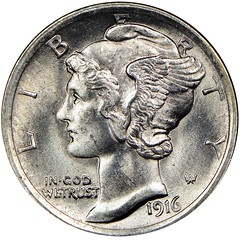

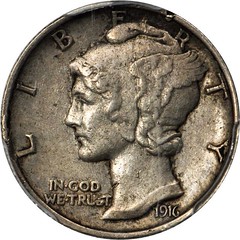

1916 Pattern Mercury Dime. Judd-1794/1983, Pollock-2042. Rarity-8. Silver. Reeded Edge. AU Details--Damage (PCGS).
Obv: Similar to the adopted Mercury type, but without the designer's initials in the right field. The date is entirely under Liberty's shoulder, the neck truncation is short and distant from the rim, and more of the letter E in LIBERTY is visible than on the regular issue of the date. Pellets divide the words IN GOD and WE TRUST in the motto, though the letters of the motto do not have any serifs.
Rev: Also similar to the adopted Mercury type, although the foliage in the olive branch is arranged somewhat differently. There is an extra sprig of three leaves in the branch to the right of the letter E in ONE, though it is somewhat obscured by the abrasions on this particular example. A collection of old, seemingly-nonsensical pinscrapes populate the reverse fields, though the surfaces are otherwise wholesome. The complexion is predominately dove-grey, revealing a faint vanilla iridescence at a tilt.
Now Judd-1983, formerly Judd-1794 in earliest editions of the Judd reference. In 1916, pattern Mercury dimes, Standing Liberty quarters, and Walking Liberty half dollars were all produced. They all closely resembled the regular-issue pieces of the year, and many of the known pattern examples of all three denominations were either spent during the Great Depression or simply lost to time. It's obvious that the present specimen saw a good deal of circulation before being plucked from circulation, though it now represents one of just two examples known from these dies.
To read the complete Coin Explorer entry, see: MERCURY DIMES 1916 MERCURY 10C MS (https://www.ngccoin.com/coin-explorer/mercury-dimes-pscid-31/1916-mercury-10c-ms-coinid-14904)
To read the complete lot description, see:
1916 Pattern Mercury Dime. Judd-1794/1983, Pollock-2042. Rarity-8. Silver. Reeded Edge. AU Details--Damage (PCGS).
(https://auctions.stacksbowers.com/lots/view/3-ABA9W)
SOME INTERESTING MEDALS: JUNE 3, 2018
After a long hiatus due to a series of illnesses. We are pleased to report that we are almost back in fighting shape with no serious after-effects. We are most appreciative of the many e-mails and phone calls expressing concern over our condition. Many prayers were offered in our behalf and, from the look of things, they were answered in a positive manner. We have rescheduled our usual spring auction to this coming fall.
Mecklenburg Declaration of Independence Medal
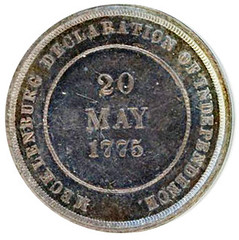
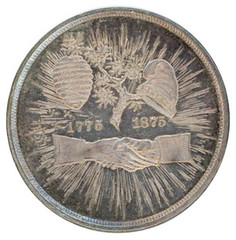
MECKLENBURG CENTENNIAL, 1875. CM-28. 30.4mm. Silver. (12.5 grams) William Barber, Sc,. An attractive proof-like Uncirculated specimen. Obverse: A tree branch with a hornet’s nest at left and a Liberty Cap at right above a pair of clasped hands. The reverse legend: MECKLENBURG DECLARATION OF INDEPENDENCE surrounds 20/ MAY/ 1775.
The Mecklenburg Declaration of Independence is alleged to be the first declaration of independence made in the Thirteen Colonies during the American Revolution. The authenticity of the document (first published in 1819) is in some dispute. We sold a similar example in silver in our Sale #83 (2013) for $920.00) The consignor of this piece is willing to let it go for a more reasonable $850.00
Columbian Exposition Official Award Medal
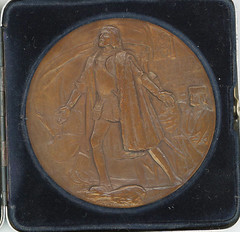
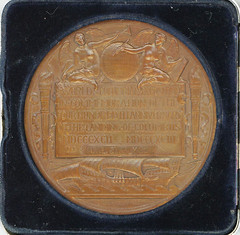
COLUMBIAN EXPOSITION OFFICIAL AWARD MEDAL, 1893. Eglit 90; Baxter 87; Marqusee 348. 76.3mm. Bronze. Augustus Saint Gaudens (Obv.) & Charles Barber (Rev.), Sc. Uncirculated. Original aluminum display case. Obverse with a full length figure of Columbus stepping ashore on the soil of the New World. Barber’s reverse design features a large central cartouche with a six line commemorative inscription. Above is a globe flanked by two semi-nude females, and at bottom, a view of a sailing ship,. The cartouche is flanked by torches to either side. The medal is named to: NATL. SUPPLY CO.
In a departure from previous world’s fairs, the award medals for the Columbian Exposition were not given on a competitive basis – they were all of a single class, struck in bronze and presented to each and every exhibitor. Although some exhibitors offered to pay for gold or silver copies, the Solicitor general issued an opinion that they could not be struck. This medal was presented to The National Supply Co. which was a Chicago firm that manufactured fuel oil burners
Saint Gaudens’ original design for the reverse was rejected by prudish Treasury Department officials because it displayed a nude male youth. The Mint then asked its own Charles Barber for a suitable replacement. On the obverse, the hooded figure with beard and hooked nose to the right side of Columbus is none other than Augustus Saint Gaudens himself- the only known self portrait of the great master. $425.00
1949 Assay Medal
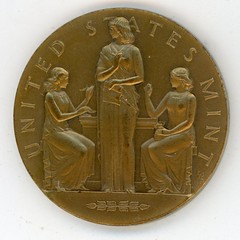

NELLIE TAYLOE ROSS' 1949 ASSAY MEDAL. JK-AC-94. 51mm. Bronze. Gilroy Roberts (Obv.) & Frank Gasparro (Rev.), Sc. Choice Uncirculated. Edge engraved NELLIE TAYLOE ROSS. Obverse with three female figures representative of the operations of the Assay Commission: weighing, recording, and counting. Legend: UNITED STATES MINT. The reverse depicts the facade of the Treasury Department with the statue of Alexander Hamilton in front. Legend: ANNUAL ASSAY COMMISSION TREASURY DEPARTMENT. Below the building is inscribed: TREASURY BUILDING/ WASHINGTON D.C./ 1949.
Nellie Tayloe Ross (1876 – 1977)) was the 14th Governor of Wyoming from 1925 to 1927 and director of the United States Mint from 1933 to 1953. She was the first woman to be sworn in as governor of a U.S. state, and remains the only woman to have served as governor of Wyoming.
This is an extremely rare medal; only 15 specimens struck according to the author of the OTACS Assay Medal pamphlet. It was missing in the Dreyfuss, Salisbury, Fred & Keusch Collections – the four major Assay Medal collections sold in the last 35 years. We acquired this example most reasonably and can offer it at an attractive $3,750.00

NUMISMATIC NUGGETS: JUNE 3, 2018
Bonhams Offers Ancient Gold Coin Necklace
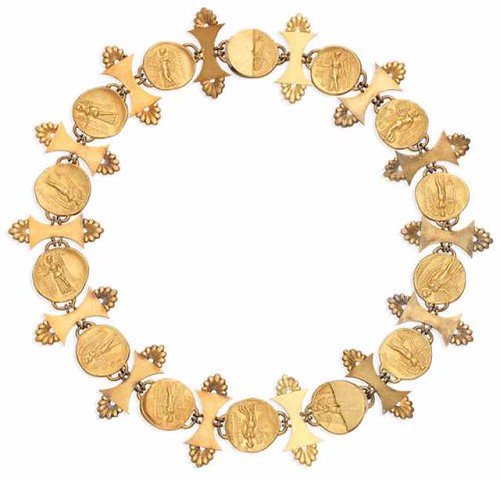
"An Ancient Coin Gold necklace" - Constructed circa 1900 and adorned with fourteen double loop mounted gold staters, of Alexander III 336-323 B.C. Obv. Head of Athena right wearing crested Corinthian helmet, R.Nike standing left, holding wreath and ships mast. Various symbols and letters in the field indicating the mints which include Macedonia (Price 168b), Miletus (Price 2114b), Sinope and Sardes (Sear 6700, 6702 and varieties). An impressive piece.
Estimated Price: US$ 10,000 - 13,000
For more information on the sale, see:
Medals, Bonds, Banknotes and Coins at Bonhams
(http://www.blouinartinfo.com/photo-galleries/medals-bonds-banknotes-and-coins-at-bonhams-london-june-13?image=3)
To read the earlier E-Sylum article, see:
2018 ANS GALA DINNER (http://www.coinbooks.org/v21/esylum_v21n04a07.html)
1858 Professor Holloways Pills Medal
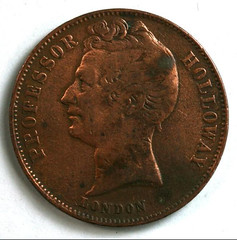

Description: 1858 Professor Holloways Pills medal. Medal cleaned
To read the complete lot description, see:
Lot 276: 1858 Professor Hollloways Pills medal (https://www.invaluable.com/auction-lot/-1-c-59B4881938)
1871 Chicago Fire Medal

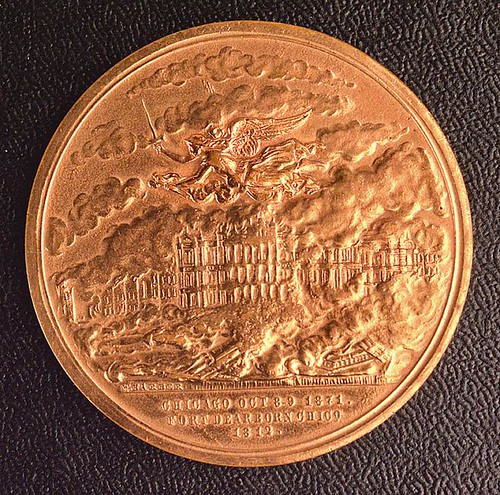
Description: United States, Great Chicago Fire Commemorative, Obv: Phoenix at centre, with fire and smoke, "Made From Chicago Court House Bell", "Semper Resurgens" below; Chicago on fire, mercury above, "Chicago Oct. 8-9 1871, Fort Dearborn Chico. 1812" in exergue; Ae, Gilt?, 51mm., by W. Barber, About VF. Surfaces are a bit porous, leaving one to believe it might be a restrike
To read the complete lot description, see:
Lot 94: Great Chicago Fire Medal, by Barber (https://www.invaluable.com/auction-lot/-1-c-D634C878DD)
1889 Yamaska Hotel Scrip
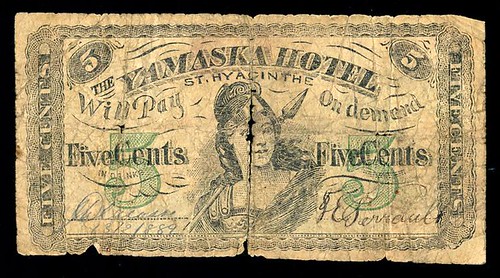
Description: The Yamaska Hotel, St. Hyacinthe, Quebec. Rare paper Token / Coupon, Good for five cents in drinks. Hand signed and dated, 08/02/1889. Obv : Is unlingual english. Reverse has an engraving of the hotel, with latin notto¨panis, vinum sed non verba¨ (Bread, wine, but no words). Obv : design reminiscent of 1870 shinplaster. Barely intact, but still fascinating.
To read the complete lot description, see:
Lot 116: The Yamaska Hotel, ¢5, 1889, Rare Paper Token / Coupon (https://www.invaluable.com/auction-lot/-1-c-98248E7B80)
RARE YEHUD COINS FOUND AT TEMPLE MOUNT
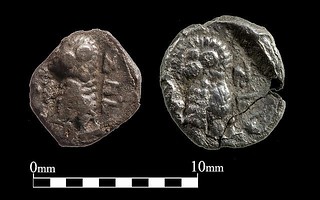 Three extremely rare Jewish-minted coins dating from the 4th century BCE were recently discovered by the Temple Mount Sifting Project, doubling the number unearthed in ancient Jerusalem to date. These coins are
among the earliest testaments to Jewish minting in the Land of Israel.
Three extremely rare Jewish-minted coins dating from the 4th century BCE were recently discovered by the Temple Mount Sifting Project, doubling the number unearthed in ancient Jerusalem to date. These coins are
among the earliest testaments to Jewish minting in the Land of Israel.
But they’re easy to miss: The coins are only 7 millimeters in diameter and of an almost negligible weight. Made of silver, their design is based on the Athenian Obol and utilize its barn owl motif, representing the goddess Athena. However, instead of the Greek letters ?T? for Athens, they bear an inscription in ancient Hebrew — “yhd” or Judah.
Yehud The Sifting Project has uncovered over 6,000 ancient coins during its systematic meticulous study of thousands of tons of Temple Mount earth haphazardly discarded during unauthorized renovations of a subterranean mosque in the late 1990s.
The Yehud coins were minted during a rare period in which Jews semiautonomously ruled under the Persian Achaemenid Empire, from circa 539-332 BCE, in a province called Yehud Medinata. With a capital in Jerusalem, Yehud Medinata existed for some 200 years until the conquest of Alexander the Great.
Interestingly, the Yehud class of coin was first identified only in 1934 by pioneering Israeli archaeologist Eleazar Sukenik. In an article, he included in this new class a drachm, which was known already from the 18th century, as well as a Palestinian collector’s obol, and a hemiobol, which had been excavated in 1931 at Beth Zur, a site of biblical import located south of Jerusalem close to Hebron.
David adds:
Coins from the Yehud mint are extremely rare, as the article says. Being only 7 to 7.5 mm in diameter, it is easy to overlook them when sifting through material from a dig.
Notice the Athenian owl appearing on one of the coins. Local rulers copied that motif to give their coins cachet. David.
To read the complete article, see:
3 tiny, extremely rare 4th century BCE Jewish-minted coins found in Jerusalem
(https://www.timesofisrael.com/extremely-rare-4th-century-bce-jewish-minted-coins-unearthed-in-jerusalem/)

COIN DATES FOURTH CENTURY B.C. ROMAN TOMB
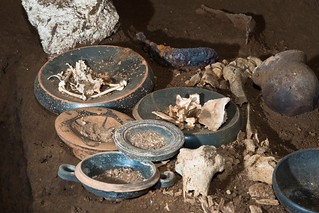 Sometimes the most extraordinary finds occur by sheer luck.
Sometimes the most extraordinary finds occur by sheer luck.
At least that was the case of a fourth century B.C. chamber tomb that came to light five weeks ago during the construction of an aqueduct in a Rome suburb, when an earthmover accidentally opened a hole in the side of the chamber.
“Had the machine dug just four inches to the left, we would have never found the tomb,” Francesco Prosperetti, Rome’s special superintendent with archaeological oversight, told reporters on Friday. The tomb contained the remains of four occupants — three men and a woman — and funerary wares.
The tomb was dated to between 335 and 312 B.C. on the basis of a coin found next to a skeleton. One side depicts the head of Minerva, the flip side a horse head with the lettering: “Romano.”
To read the complete article, see:
Roman Tomb Unearthed; to Everyone’s Surprise, It’s Intact (https://www.nytimes.com/2018/06/01/arts/design/roman-tomb-intact.html)
 Alongside the skeletons, archeologists found the remains of food offered to the gods, including the bones of rabbits, chickens, lambs and goats, as well as ceramic plates and bowls.
Alongside the skeletons, archeologists found the remains of food offered to the gods, including the bones of rabbits, chickens, lambs and goats, as well as ceramic plates and bowls.
They also recovered a 4th century BC bronze coin decorated with the helmeted head of the goddess Minerva.
Finding a tomb that is intact is rare, because many discovered in the past are either damaged by subsidence or robbed of their artefacts by tomb raiders.
To read the complete article, see:
Roman merchant who was beheaded by flying rock while fleeing Pompeii had 'treasure trove' of
silver coins (https://www.telegraph.co.uk/news/2018/06/01/roman-merchant-beheaded-flying-rock-fleeing-pompeii-had-treasure/)
COINAGE OF THE ROMAN USURPERS
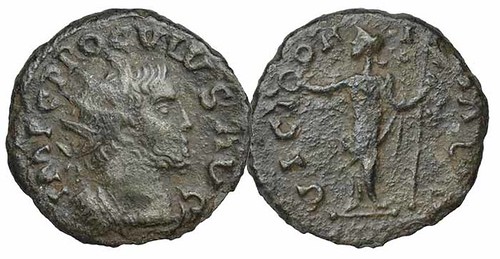
Proculus (Usurper c. 280-281), billon Radiate, uncertain Gallic mint,
IMPERIAL ROME NEVER REALLY solved the problem of orderly succession to power. The “normal” pattern of inheritance in a monarchy is an elderly ruler replaced after his natural death by a well-qualified adult son. For Rome, this was an exception, not a rule.
Officially, an emperor had to be recognized by the Senate to be considered “legitimate”, but the increasingly powerless senators were often willing to stamp their approval on anyone who had the cash to bribe or the muscle to threaten them.
Many emperors died by suicide or by violence, often at the hands of their own troops or palace retainers. A few fell in battle. The unfortunate Carus (ruled 282 – 283) supposedly was struck by lighting, although this may be a cover story for assassination.
During the chaotic third century, more than 30 men simply declared themselves emperor, or were proclaimed as such by their legions. One of the first things a claimant needed to do was issue coins–to symbolize his authority, publicize his image, and, of course, pay his troops. It is a tribute to the remarkable efficiency of Roman mints that even rulers who held power for a few weeks were able to get coins bearing their image and titles into circulation. The coins of these “usurpers” are some of the rarest – and ugliest – Roman coins ever minted.
To read the complete article, see:
Imperial Wannabes: The Ancient Coinage of Roman Usurpers
(https://coinweek.com/ancient-coins/imperial-wannabes-the-ancient-coinage-of-roman-usurpers/)

SPANISH GALLEON SAN JOSE FOUND
A more than 300-year-old Spanish shipwreck carrying treasure that might be worth up to $17 billion was discovered with the help of an underwater robot. It's called the Remus 6000 and it can dive nearly four miles and is loaded with sensors and cameras.
Bronze cannons confirmed "the holy grail of shipwrecks" had been found at the bottom of the Caribbean Sea. They are engraved with dolphins — a telltale sign they belong to the Spanish galleon San Jose, lost more than 300 years ago.
To read the complete article, see:
Robot sub finds 'holy grail of shipwrecks' with treasure worth billions
(https://www.msn.com/en-us/news/world/robot-sub-finds-holy-grail-of-shipwrecks-with-treasure-worth-billions/ar-AAxGkxe)
EXHIBIT: SAWYER’S NATIVE AMERICAN GALVANOS
Portrait Galvanos Offered by Heritage Auctions
Selection of 18 unique portraits highlight June Long Beach Expo
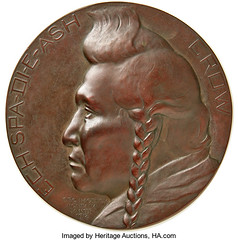 A rare group of artist Edward Warren Sawyer's Native American Portrait Galvanos, heralded as both artistic and historic contributions to American art, will be offered by Heritage Auctions June 13-18 in Long
Beach, California. Completed from 1904 to 1912, scholars credit Sawyer’s skilled ability to capture a subject’s likeness for setting a highpoint in the field of medallic art.
A rare group of artist Edward Warren Sawyer's Native American Portrait Galvanos, heralded as both artistic and historic contributions to American art, will be offered by Heritage Auctions June 13-18 in Long
Beach, California. Completed from 1904 to 1912, scholars credit Sawyer’s skilled ability to capture a subject’s likeness for setting a highpoint in the field of medallic art.
“The majority of these galvanos found in museums and it is highly unusual to see any examples offered at auction,” said Mark Borckardt, Senior Numismatist at Heritage Auctions. “Previously, only two examples have appeared for public sale to the best of our knowledge.”
A galvano is a uniface rendering with the back typically filled with lead or another material to provide support. The galvanos were created in two sizes, 2-3/4-inch diameter and 5-inch diameter. There are 38 different subjects and 41 varieties of Sawyer’s portraits known today. The Medallic Art Company produced the galvanos from Sawyer’s models.
Museums and institutions holding examples of Sawyer’s galvanos include the American Numismatic Society, the Art Institute of Chicago, the Massachusetts Historical Society, the Musee d’Orsay in Paris, the Smithsonian Institution, the University of Reno and the Whitney Western Art Museum in Cody, Wyoming.
Sawyer was trained at the Art Institute of Chicago under the tutelage of Hermon MacNeil, the famed designer of the Standing Liberty quarter. He later studied at the Académie des Beaux Arts in France before embarking on three visits to the American West. He visited members of the Yuma tribe but was only successful in convincing member Ne-I-So-Meh to pose for him.
Sawyer completed several portraits of members of the Navajo nation. Included in the auction are galvanos depicting At-Zi-Di, Ish-ki-La-Cai and Est-Zan-Lopa, whom Sawyer described as “a little girl blanket weaver.” The group also includes a galvano of a 63-year-old Native American named Capitan and one named Quinlichini-Nez.
The selection of Sawyer’s work appearing in the auction also includes members of the Pawnee, Cheyenne, Wichita, Oglala Sioux, Osage, Kikapoo, Arapahoe and Crow nations, the last including Curley, the famous Crow scout for George Armstrong Custer.
A document providing a detailed overview of Sawyer’s life, work and accolades is available on Heritage Auctions’ website.
To read the complete Sawyer article, see:
https://www.heritagestatic.com/c/d/cms/550/068/sawyer-overview.550068899.pdf
To read earlier E-Sylum articles, see:
ANS PUBLISHES EDWARD SAWYER’S NATIVE AMERICANS MEDALS ONLINE (http://www.coinbooks.org/esylum_v16n46a12.html)
MORE ON EDWARD SAWYER'S INDIAN MEDALS (http://www.coinbooks.org/esylum_v16n47a16.html)
SAWYER NATIVE AMERICANS MEDAL GALVANOS (http://www.coinbooks.org/v20/esylum_v20n22a26.html)
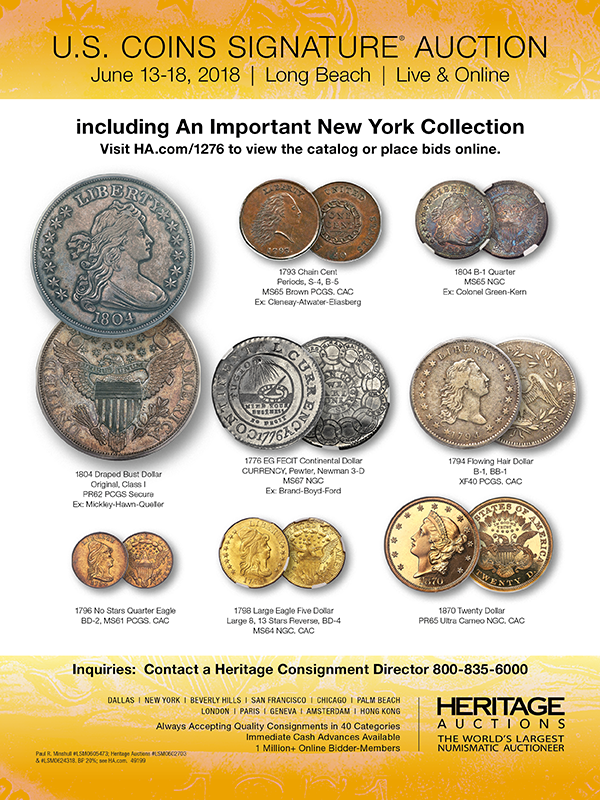
MCAFEE LAUNCHES PHYSICAL CRYPTOCURRENCY
One of the latest comes from the eccentric (to say the least) John McAfee. -Editor
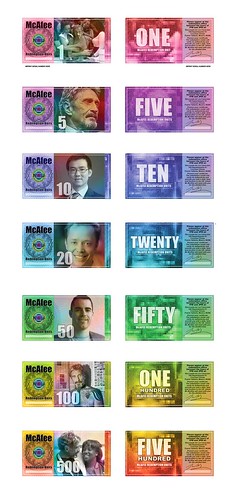 Eccentric cybersecurity pioneer and initial coin offering (ICO) promoter John McAfee says that he is releasing a physical cryptocurrency called the “McAfee Redemption Unit” (MRU).
Eccentric cybersecurity pioneer and initial coin offering (ICO) promoter John McAfee says that he is releasing a physical cryptocurrency called the “McAfee Redemption Unit” (MRU).
The currency, announced on Twitter and confirmed by McAfee in a subsequent interview with regional outlet Crypto-News India, appears to be distinct from McAfee Coin, which launched last year to little market demand and appears to no longer have a working website.
The physical notes come in seven denominations, ranging from 1 to 500 MRUs. Four of the notes feature pictures of McAfee in various stages of undress, including one in which he is surrounded by women, his nose covered in white powder (it’s a screenshot from this video). The other three MRU notes feature pictures of Bitmain founder Jihan Wu, cryptocurrency entrepreneur Brock Pierce, and Bitcoin.com owner (and Bitcoin Cash promoter) Roger Ver. It’s not clear if these three figures gave their consent to have their likenesses featured on MRU notes.
Each MRU has an initial face value of $9.95 and can be redeemed for a one-minute in-person meeting with McAfee (yes, they’re stackable). McAfee said that 341,000 MRU notes of different denominations have been printed, with a total circulation of 6,050,000 MRU and an implied market cap of $60.2 million.
There’s a case to be made that the redemption process is perhaps even more convoluted than attempting to withdraw USD from Tether. According to a message printed on the notes, they can only be redeemed in person in Mexico during a two-hour window each day, at which time the owner will be given a particular date, time, and location in the United States in which he or she will be able to meet with McAfee. Individuals, incidentally, may only redeem 100 MRUs at a time.
To read the complete article, see:
Eccentric ICO Promoter John McAfee Says He’s Releasing a Physical Cryptocurrency
(https://www.ccn.com/eccentric-ico-promoter-john-mcafee-says-hes-releasing-a-physical-cryptocurrency/)
THE BOOK BAZARRE
HONG KONG MOVIE MONEY MASTER CONVICTED
 The Hong Kong film industry has been quick to condemn a court decision which handed suspended jail sentences to two film crew for possession of counterfeit money.
The Hong Kong film industry has been quick to condemn a court decision which handed suspended jail sentences to two film crew for possession of counterfeit money.
Cheung Wai-chuen, owner of a well-known film properties company, and Law Yun-lam, a logistics firm employee, were sentenced to four months in prison on Thursday by a Hong Kong district court. The sentence was suspended for two years.
The British pounds, Chinese Yuan and U.S. and Hong Kong dollars found in Law’s car and at Cheung’s warehouse were prop banknotes used in the 2016 film “Trivisa.” Despite the notes being marked as props, the judge told the court that the fake money looked too real. “Nobody could rule out the risk of people stealing these fakes and using them as real money,” she said.
“This is against the industry’s dedication to professionalism in filmmaking. The authorities’ took on a case that case was unjust. Members of the Hong Kong film industry are not only disappointed and furious, it also sends shivers down our spines,” said the Federation of Hong Kong Filmmakers in a statement.
With every aspect of Hong Kong society nowadays politicized, some in the industry suspect not just a heavy-handed judge, but the influence of the mainland Chinese government. Hong Kong is a Special Administrative Region of China with its own common law legal system and independent courts. But “Trivisa” fell foul of Beijing.
A 1997-set gangland drama, it was banned in China. Even the broadcast of its winning the prize for best picture at the 2017 Hong Kong Film Awards was blacked out on Chinese TV broadcasts.
To read the complete article, see:
Hong Kong Court Convicts Props Master for Possession of Fake Cash
(https://variety.com/2018/film/asia/hong-kong-court-jail-prop-master-fake-cash-1202826452/)
CHINESE MAN GIVES GIRLFRIEND BANKNOTE BOUQUET
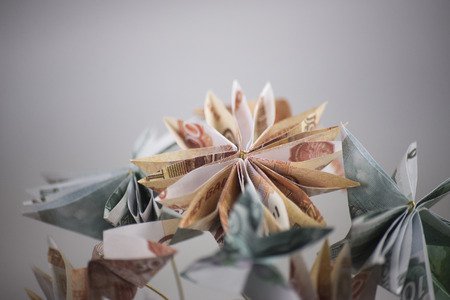
Perhaps the adage “Money can’t buy you love nor happiness” may now be reconsidered, as a man from China flexed his financial muscles and got his girlfriend a bouquet for her birthday — but not just any bouquet.
The unnamed man apparently gave his girlfriend last week a giant bouquet made of banknotes. The banknotes amounted to 334,000 yuan ($52,300 or P2.7 million) and were folded into origami flowers, as per Chongqing Morning Post via the South China Morning Post, May 25.
A person who attended the girl’s birthday party revealed that the bouquet was created by workers from a local florist. “The arrangement took seven people more than 10 hours to complete,” the guest said in the report.
See the earlier E-Sylum article for a similar bouquet discussed last year. -Editor
To read the complete article, see:
Chinese man gives girlfriend banknote bouquet worth P2.7 million
(http://lifestyle.inquirer.net/295766/chinese-man-gives-girlfriend-banknote-bouquet-worth-p2-7-million/)
To read the earlier E-Sylum article, see:
CHINESE BANKNOTE BOUQUET (http://www.coinbooks.org/v20/esylum_v20n09a32.html)

FEATURED WEB SITE: MEDAL COLLECTORS OF AMERICA
This week's Featured Web Site is the newly redesigned Medal Collectors of America site.Medal Collectors of America (MCA) was founded in August 1998 at the Portland, Oregon, convention of the American Numismatic Association (ANA). Its primary purpose was to serve collectors of world and U.S. art and historical medals. MCA would bring together those interested in collecting, research and publication of research concerning art and historical medals.
MCA exists to serve the collector of art and historical medals. Its publication, The MCA Advisory and this MCA website provide a forum for research, news and views in the field of medallic art. MCA encourages research and publication and recognizes excellence through its annual Carl W.A. Carlson Award and Georgia Stamm Chamberlain Award. With nearly two decades of steady growth under its belt, MCA is here to stay as the spokesman of a significant but long-neglected area of numismatics in this country.
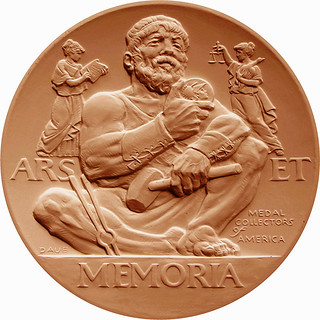
https://www.medalcollectors.org/

